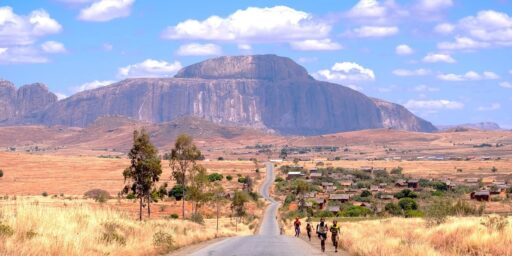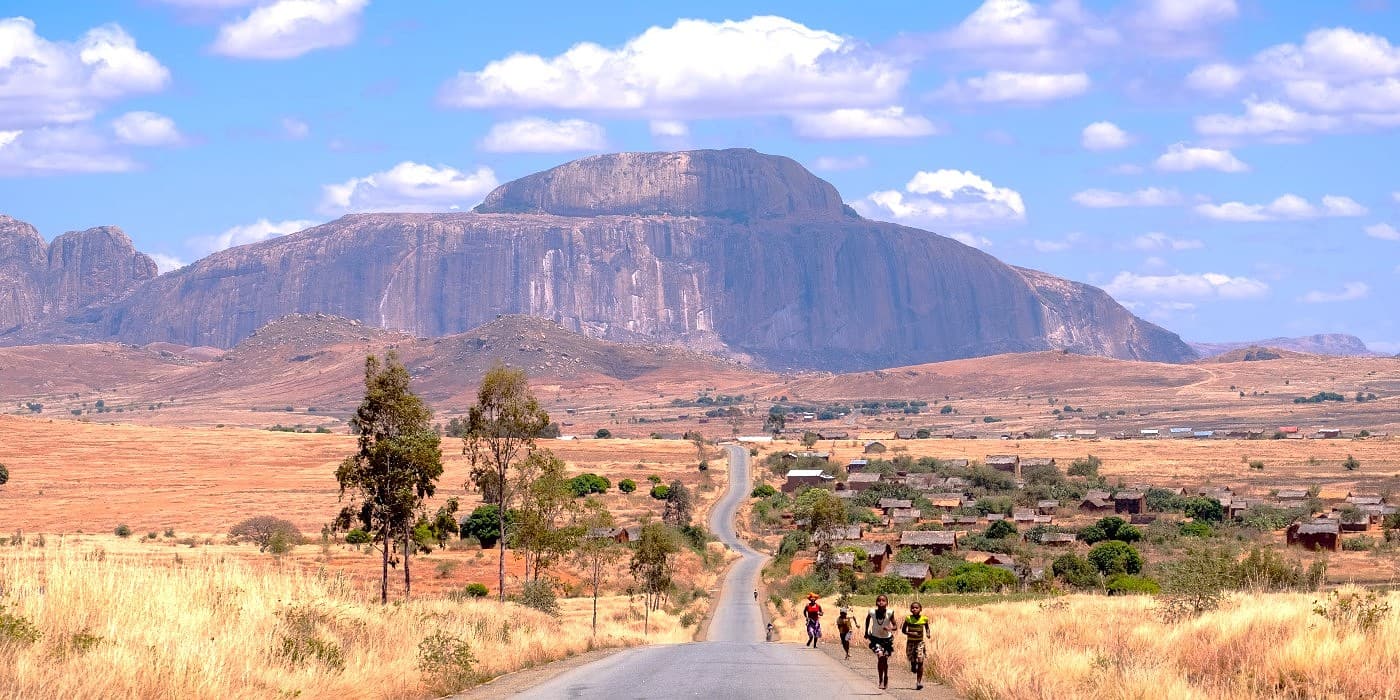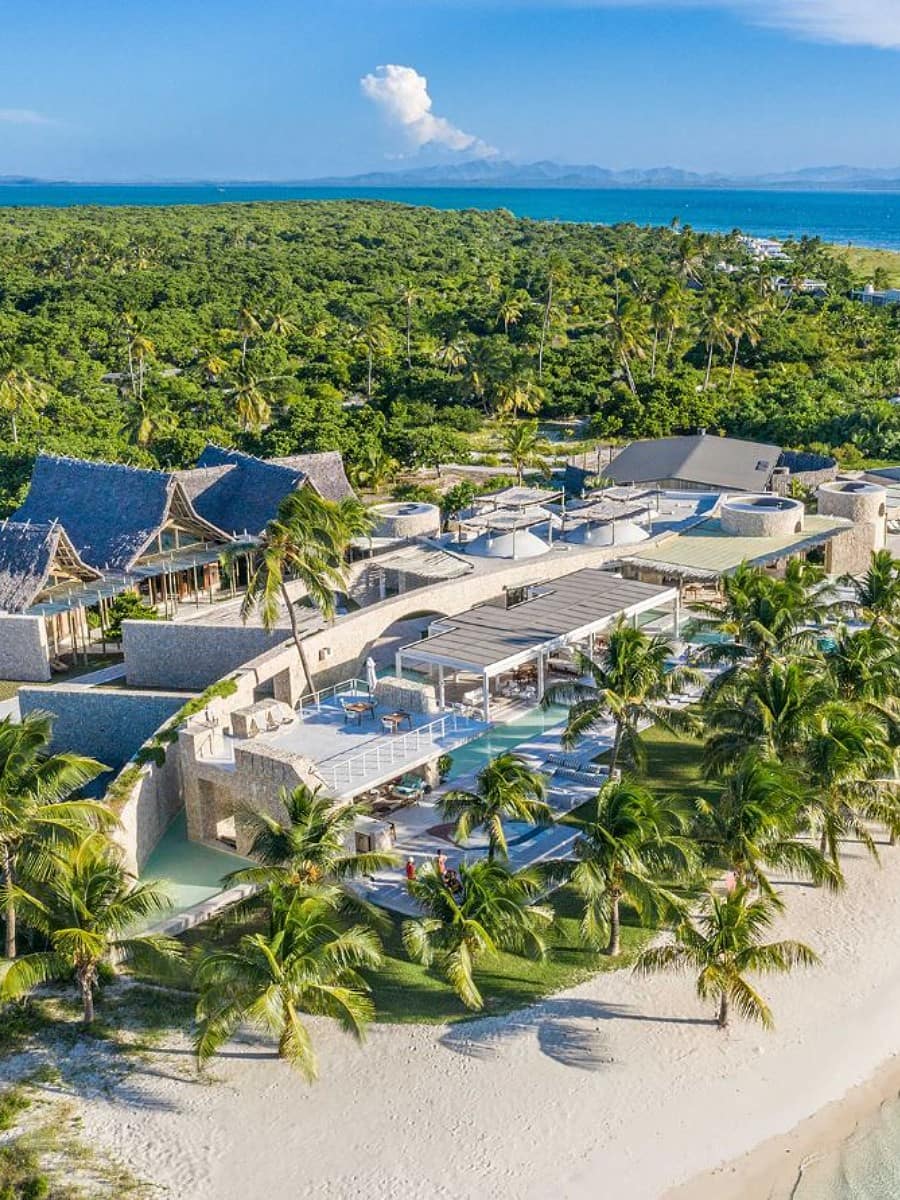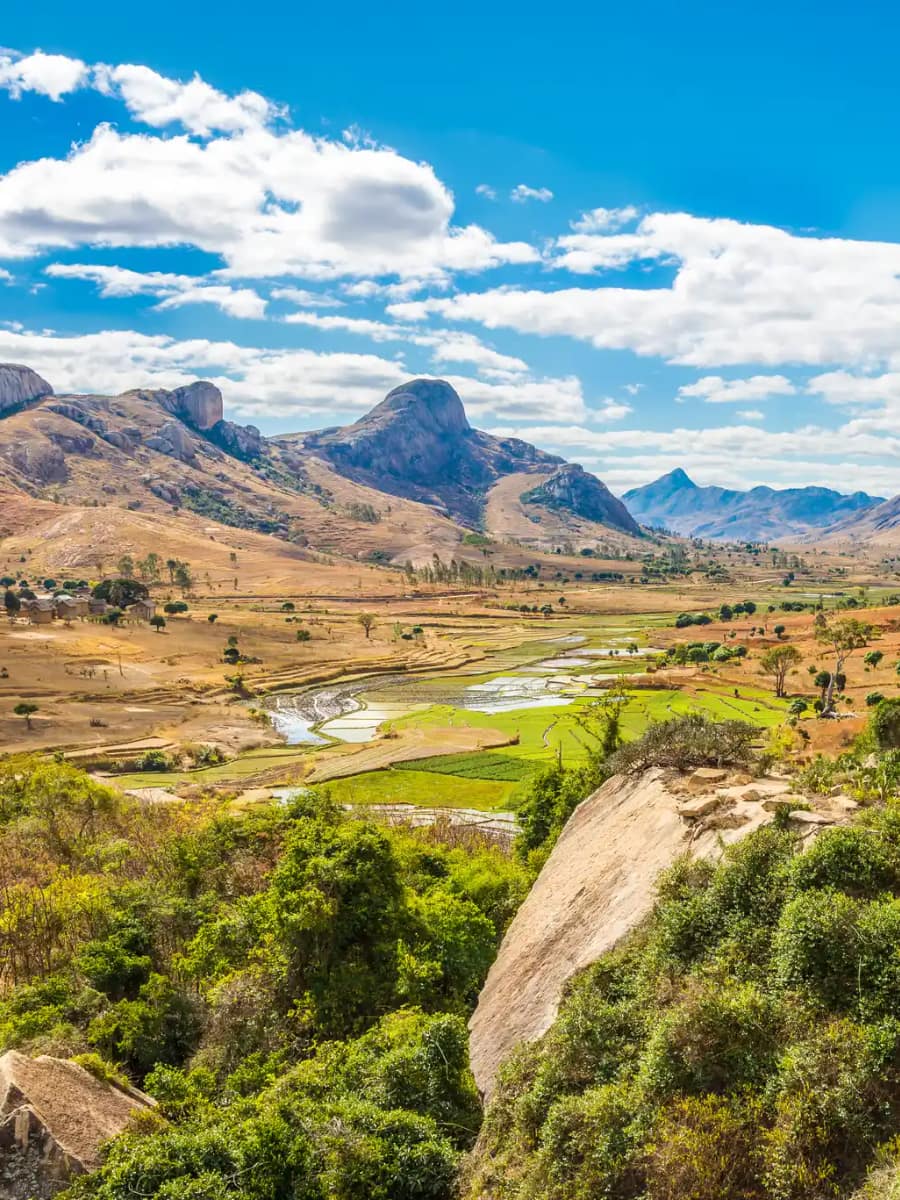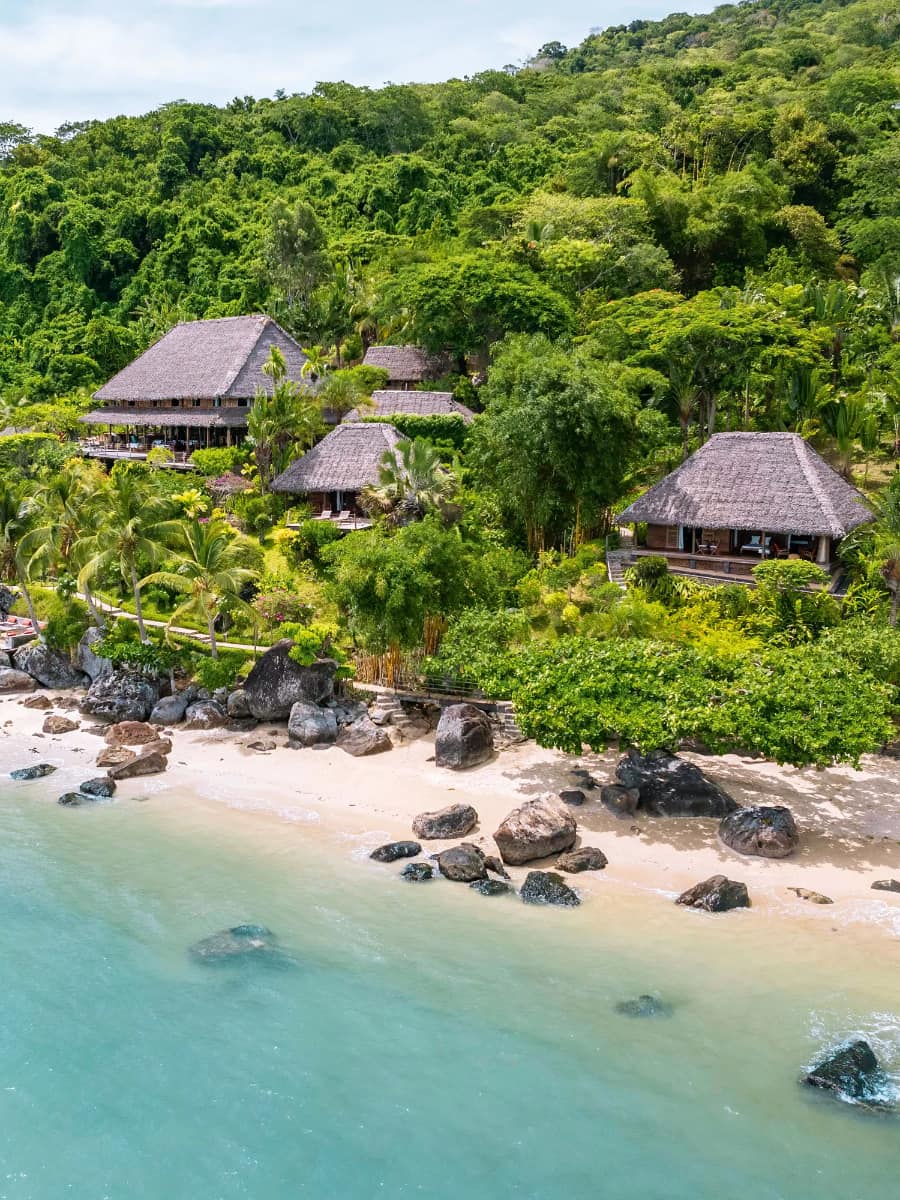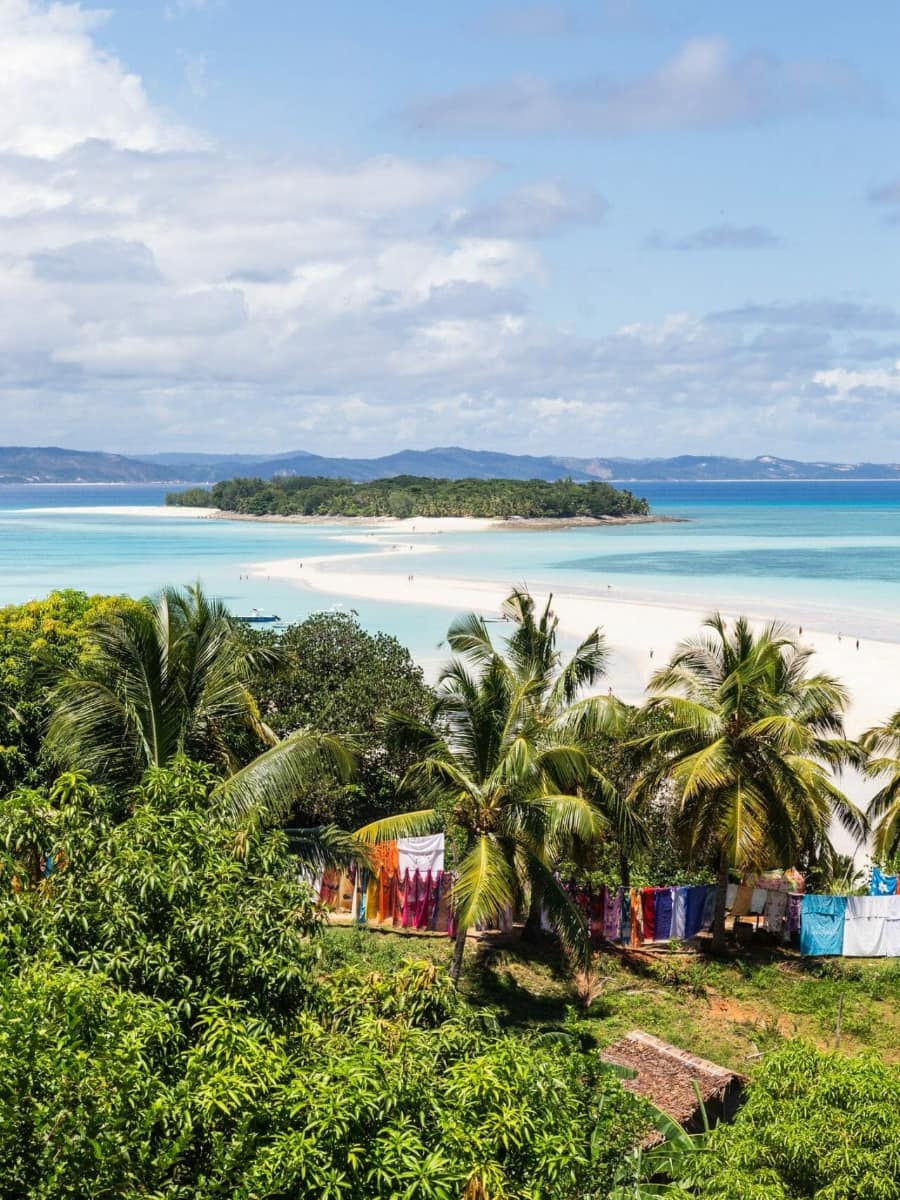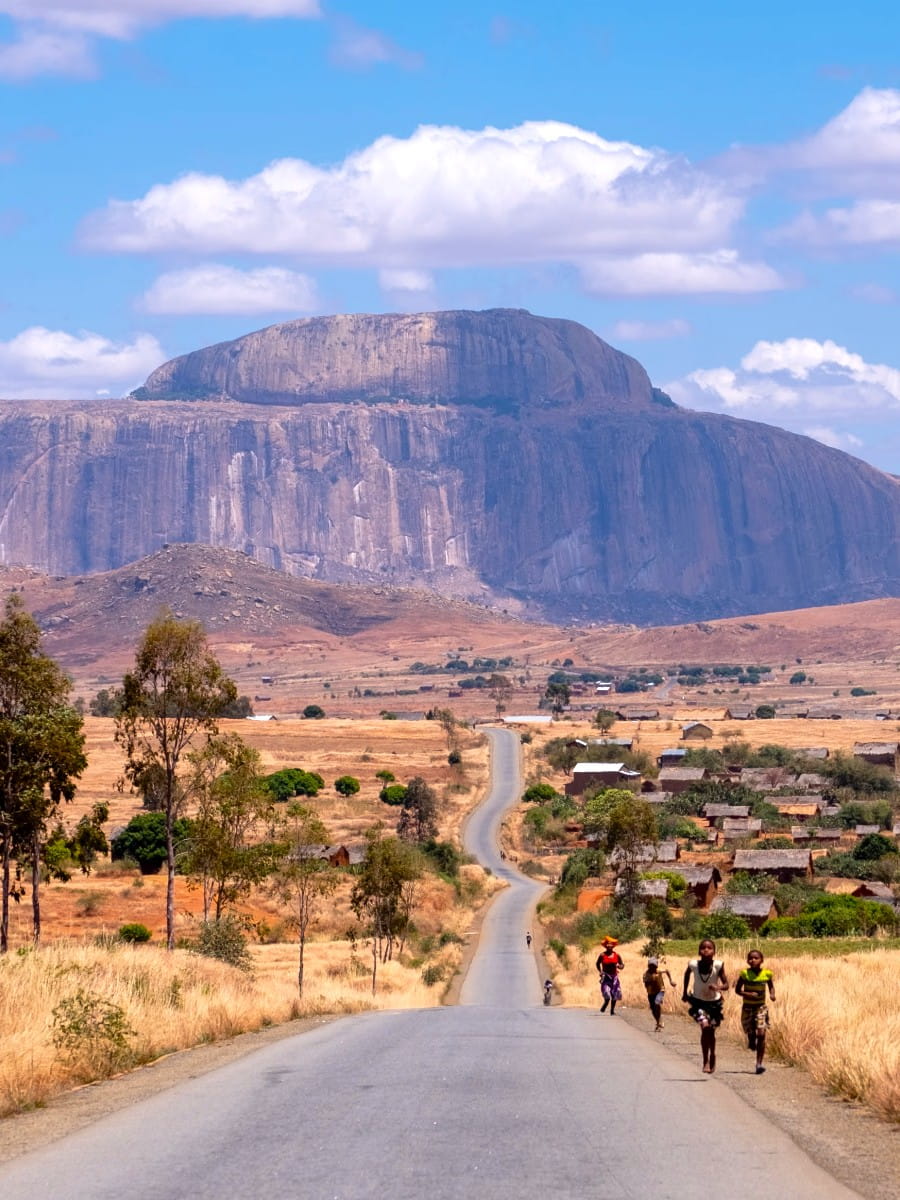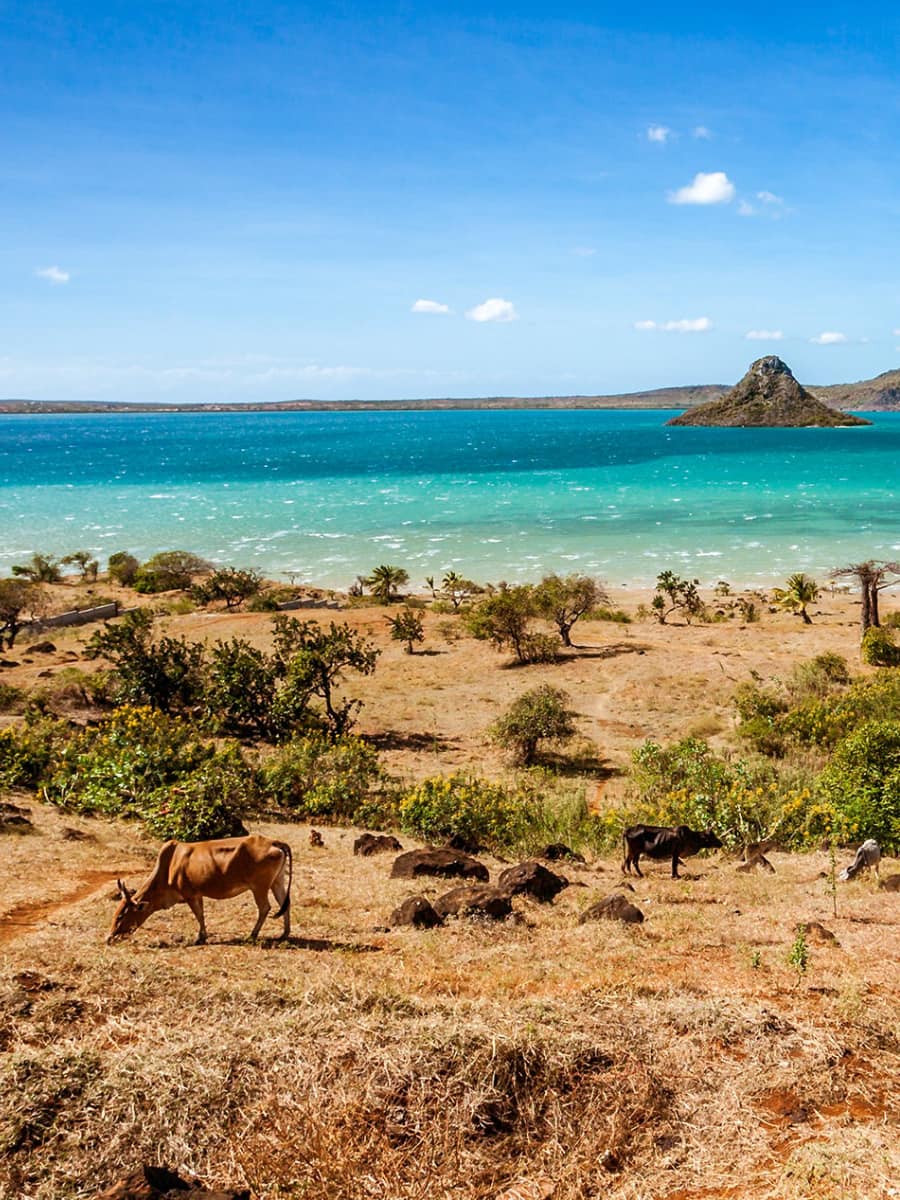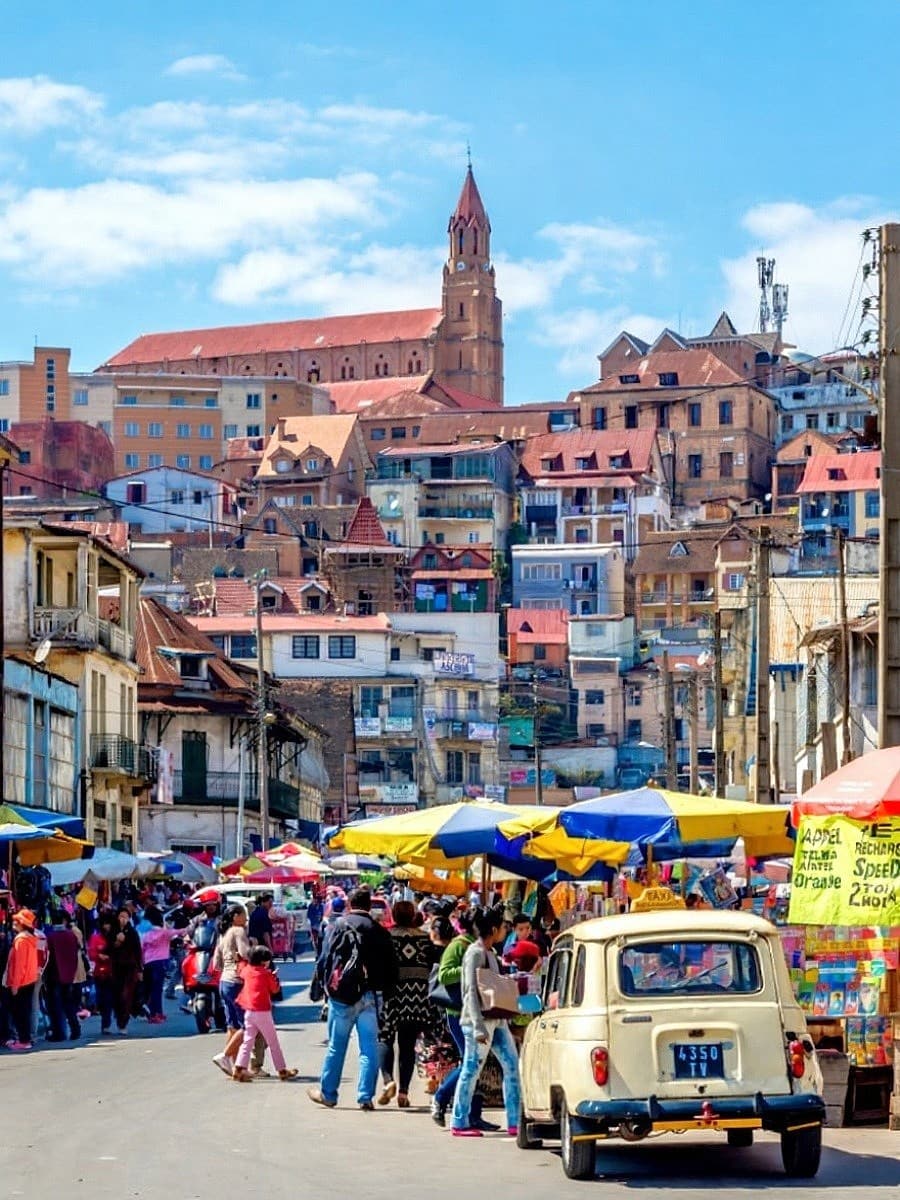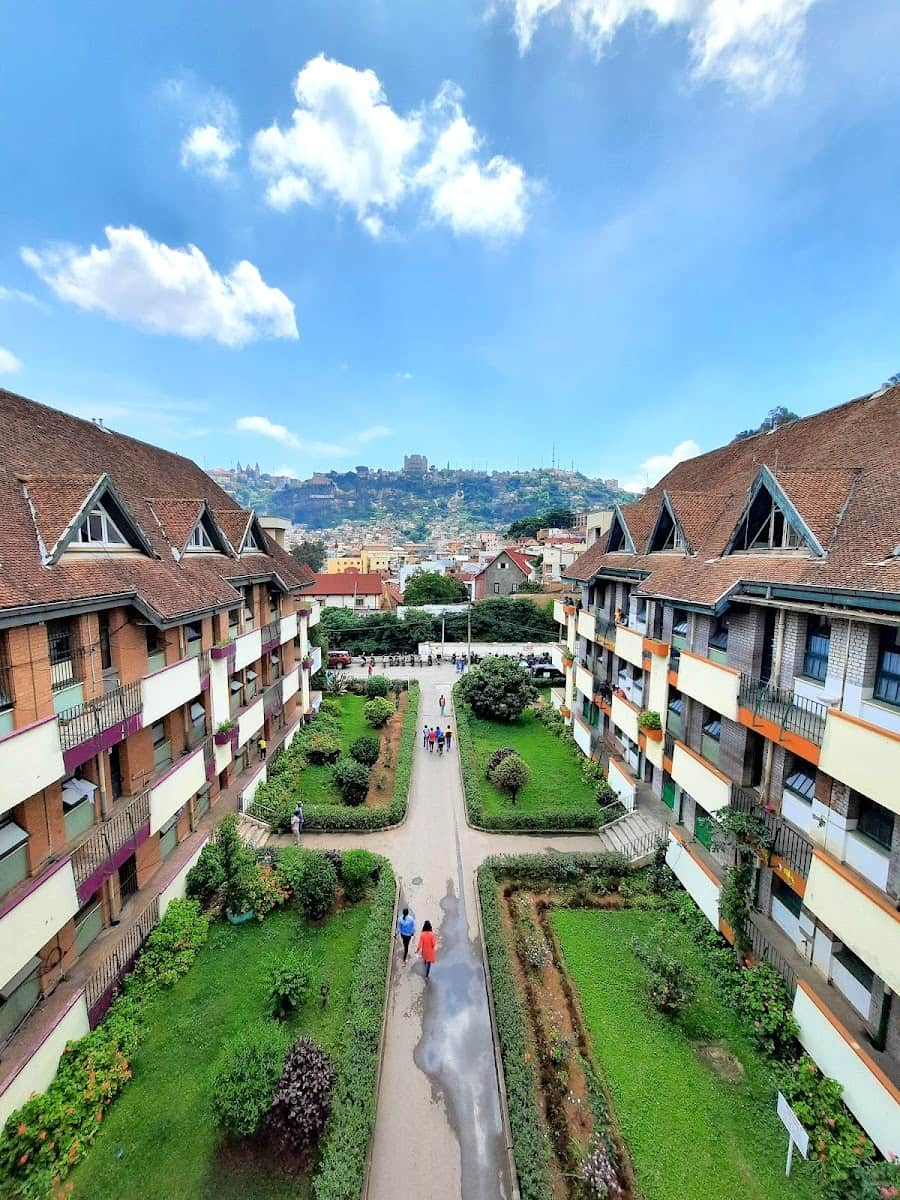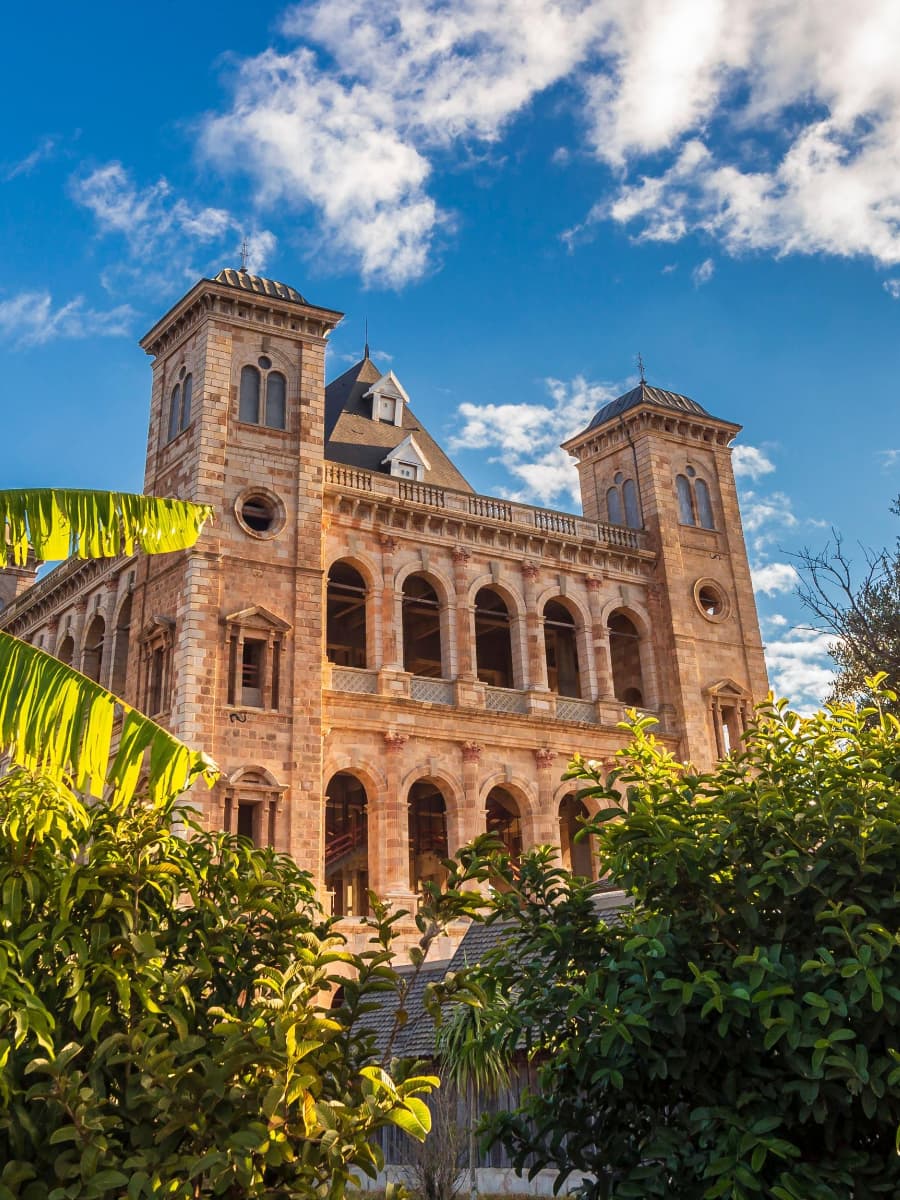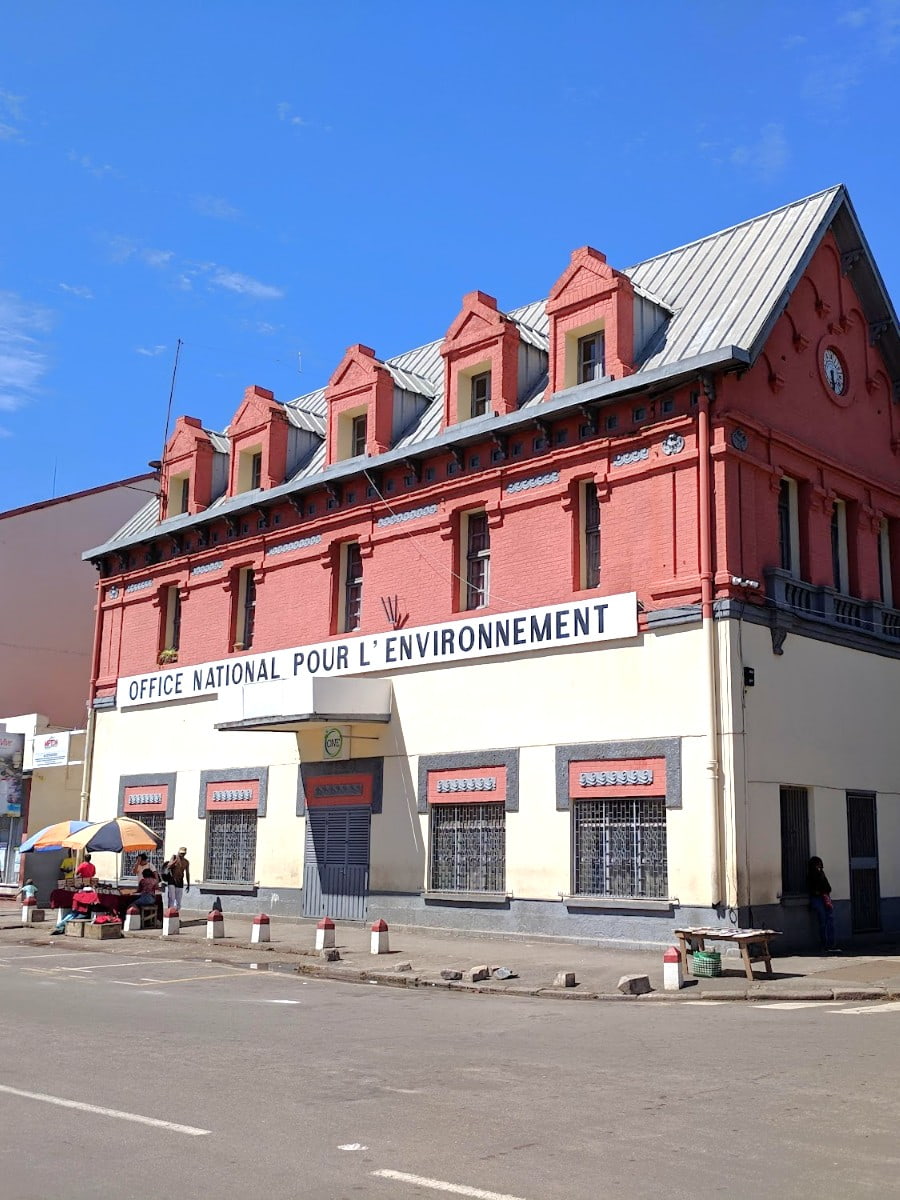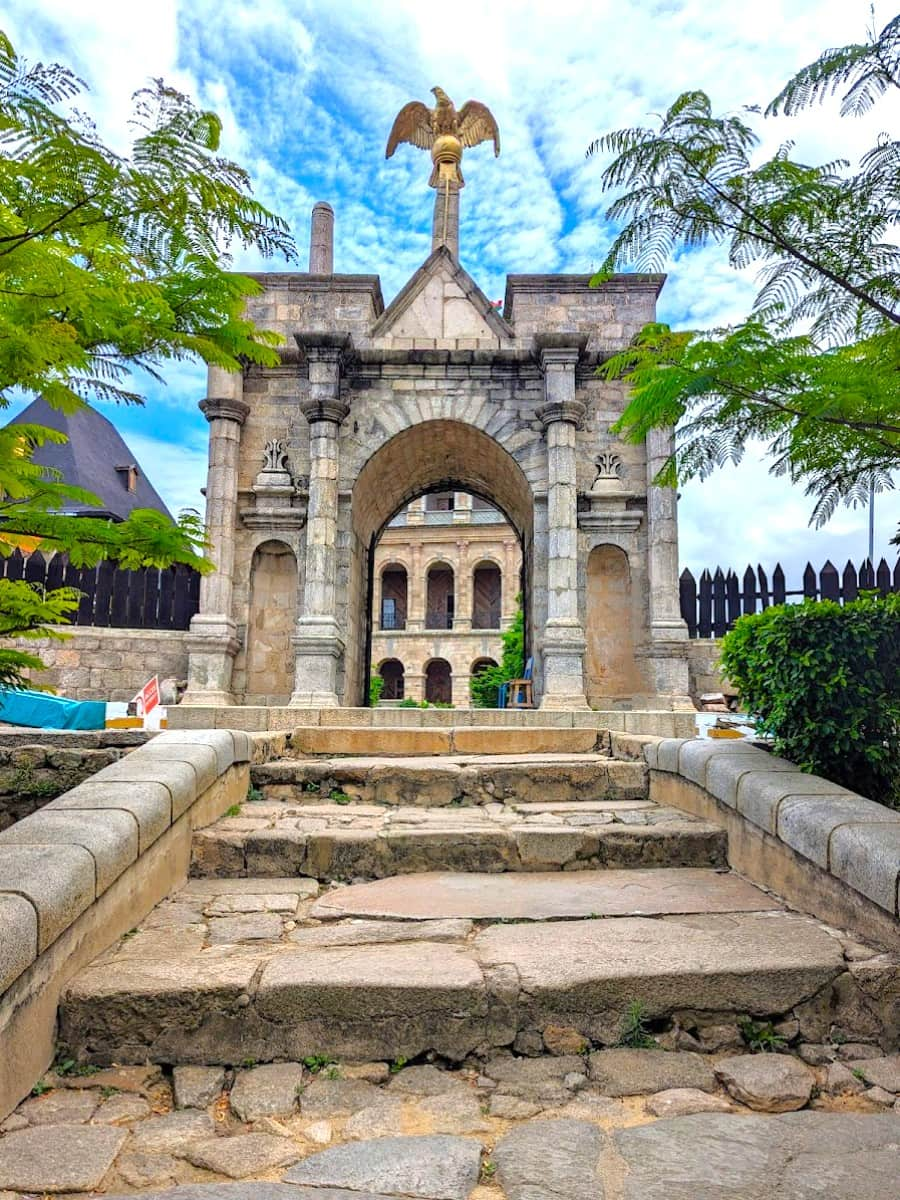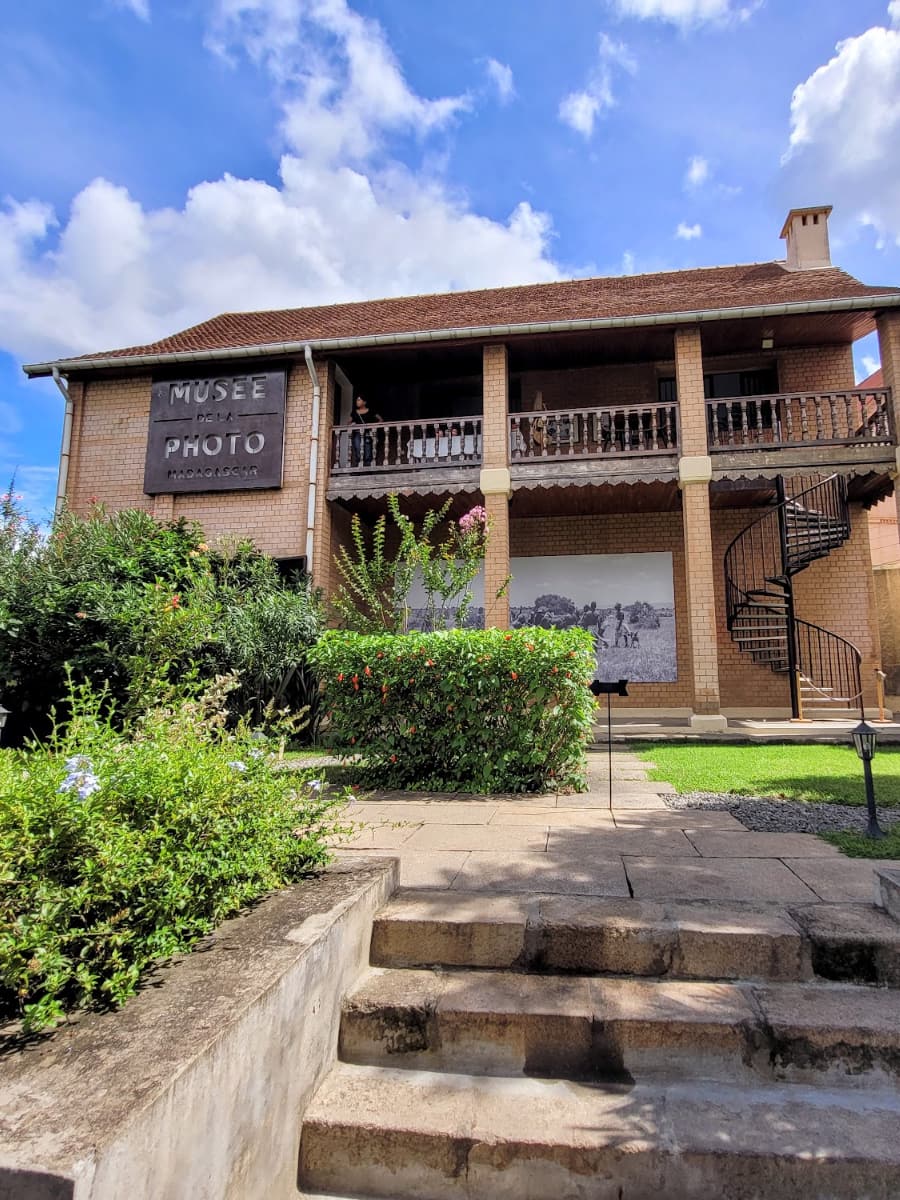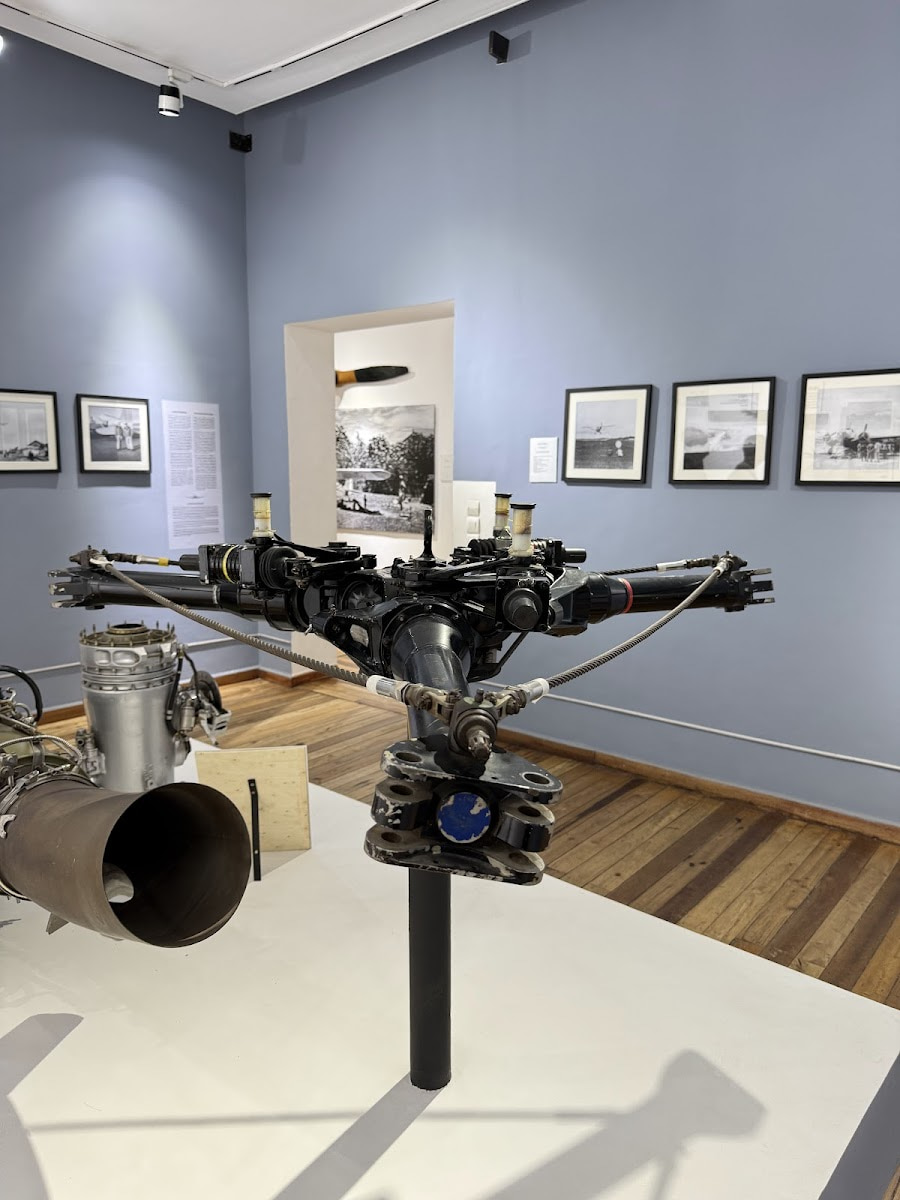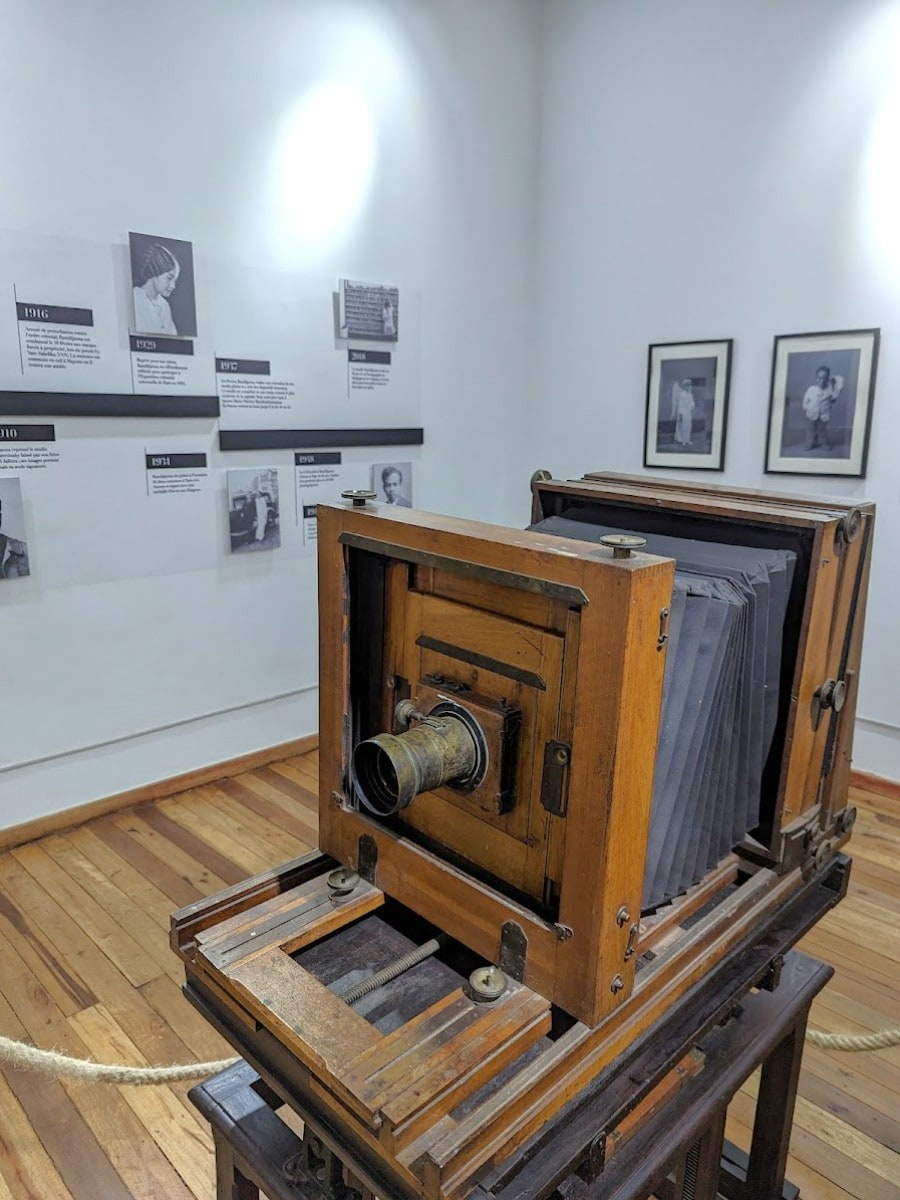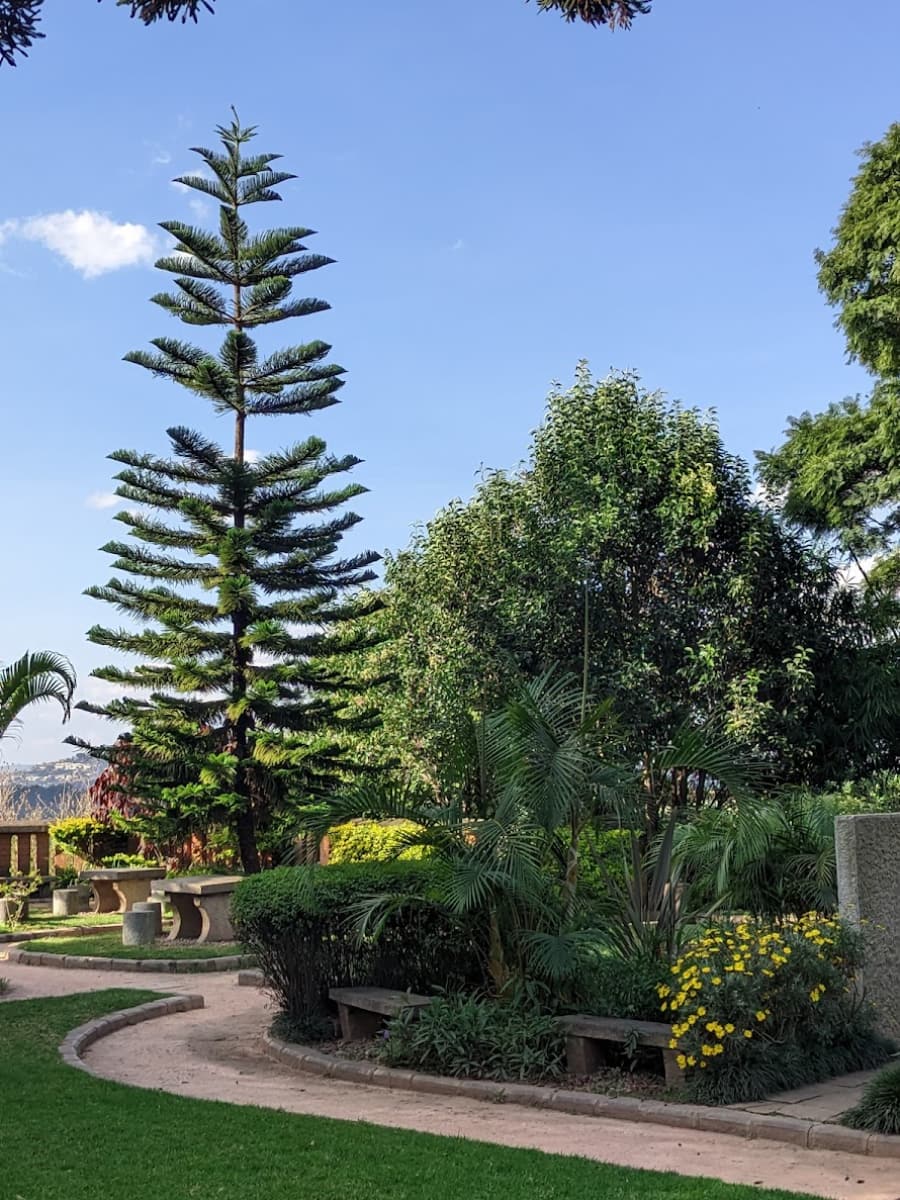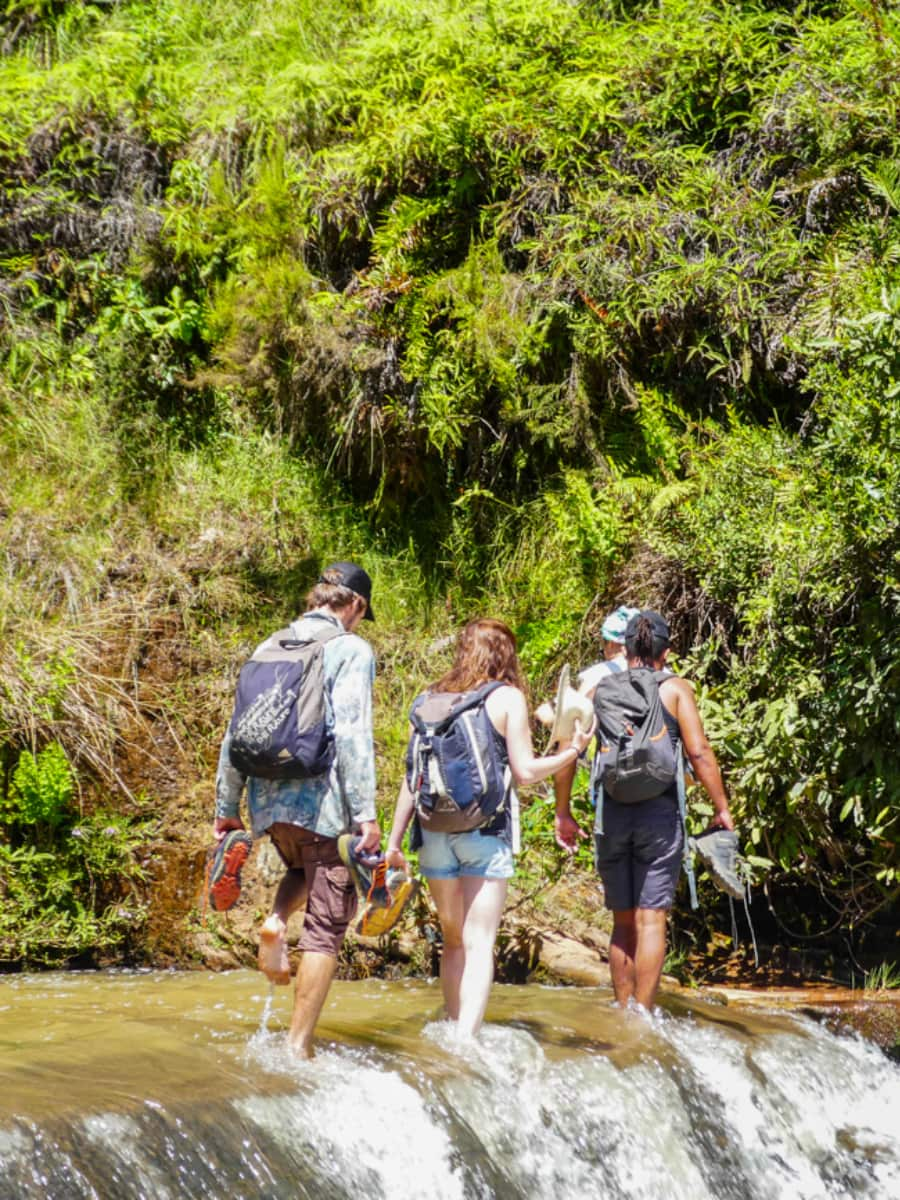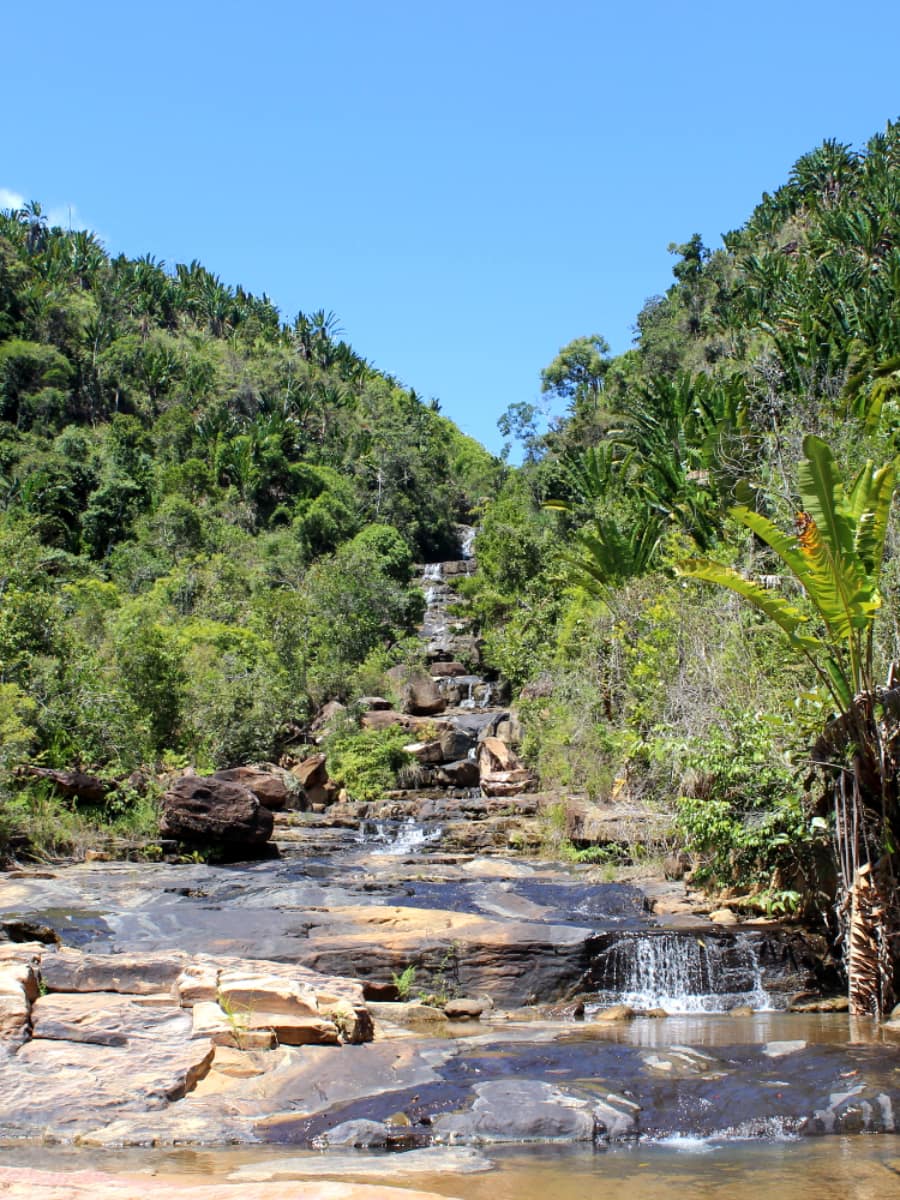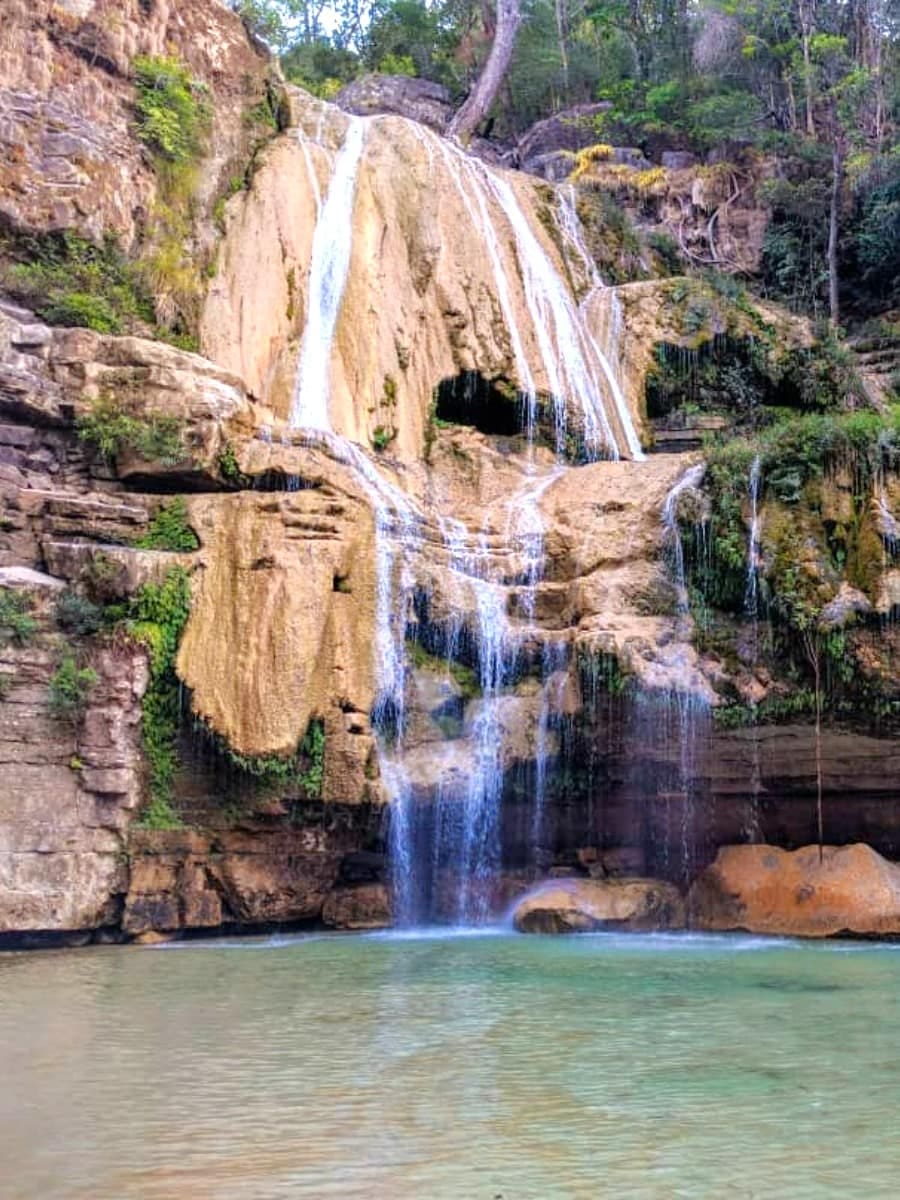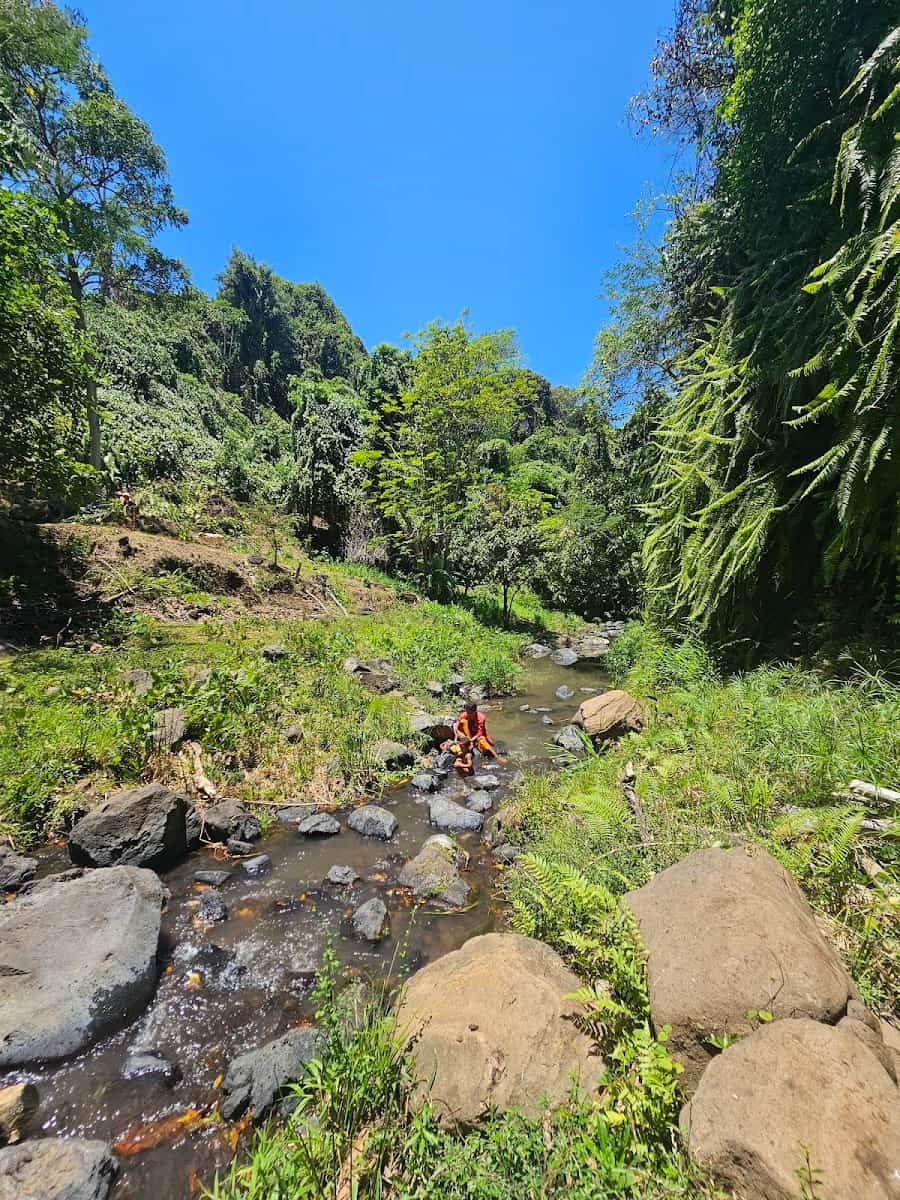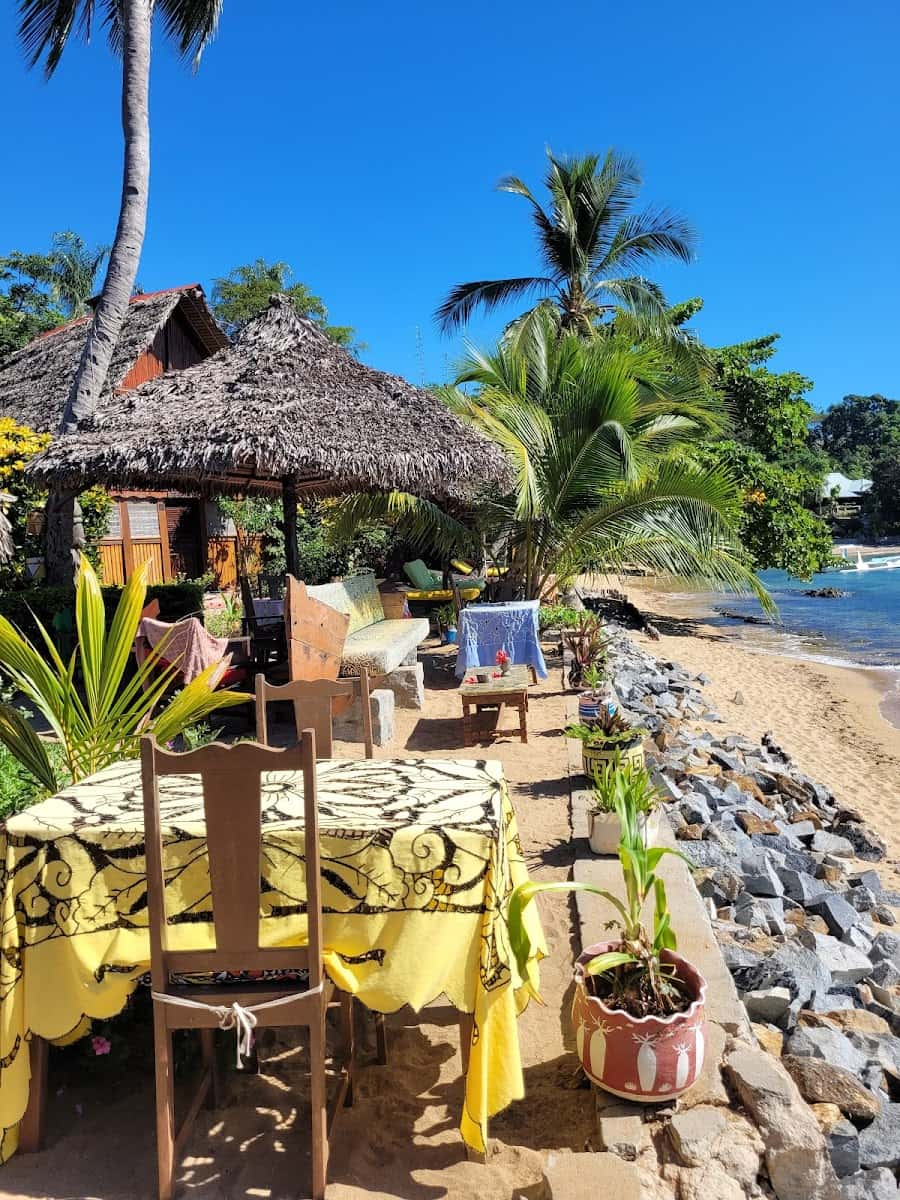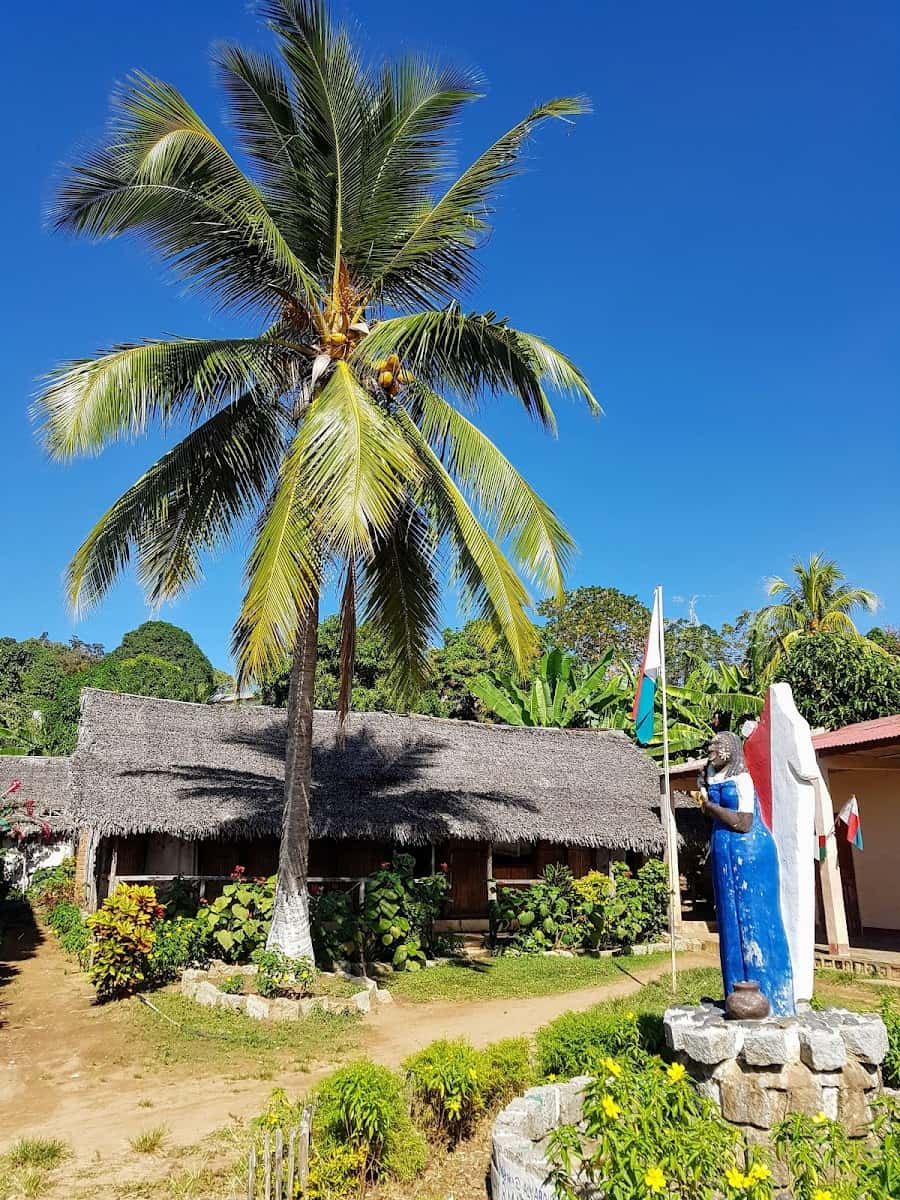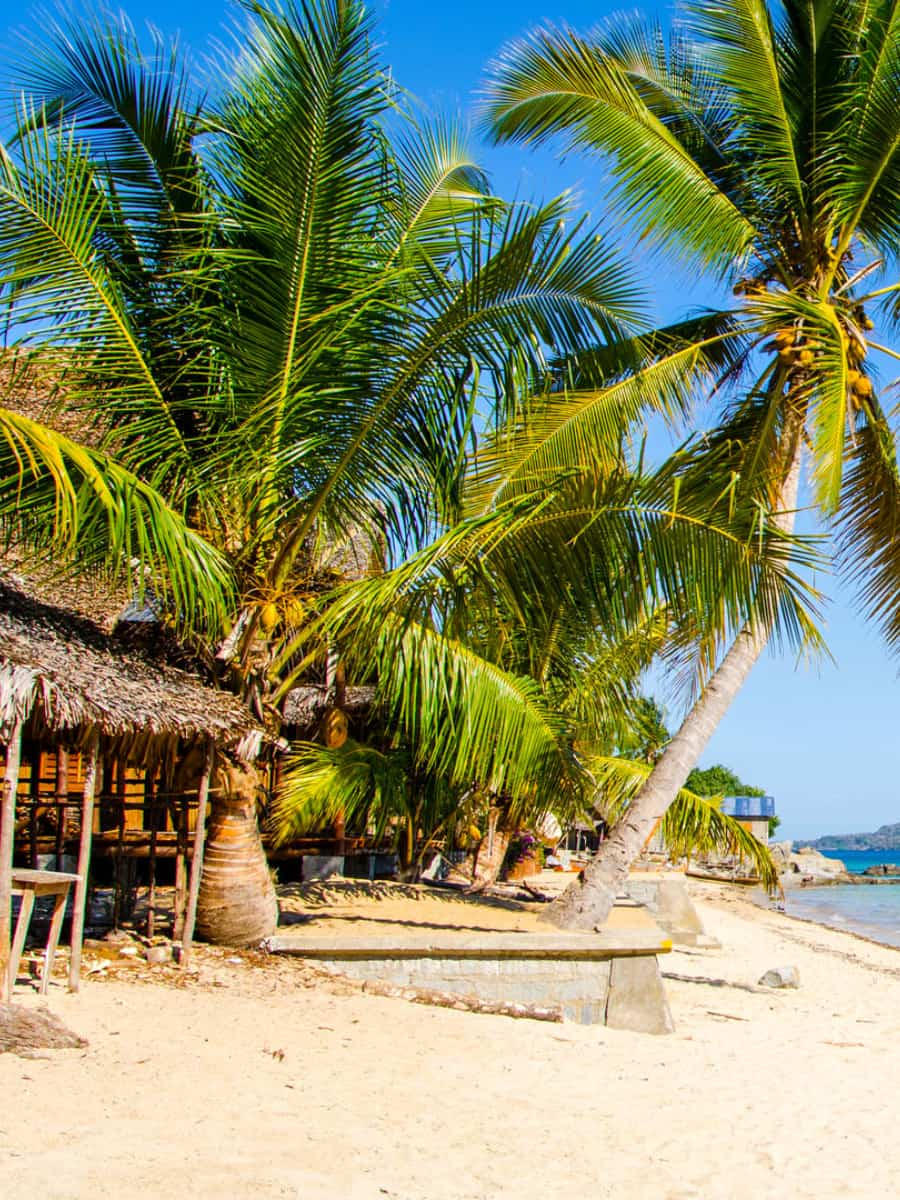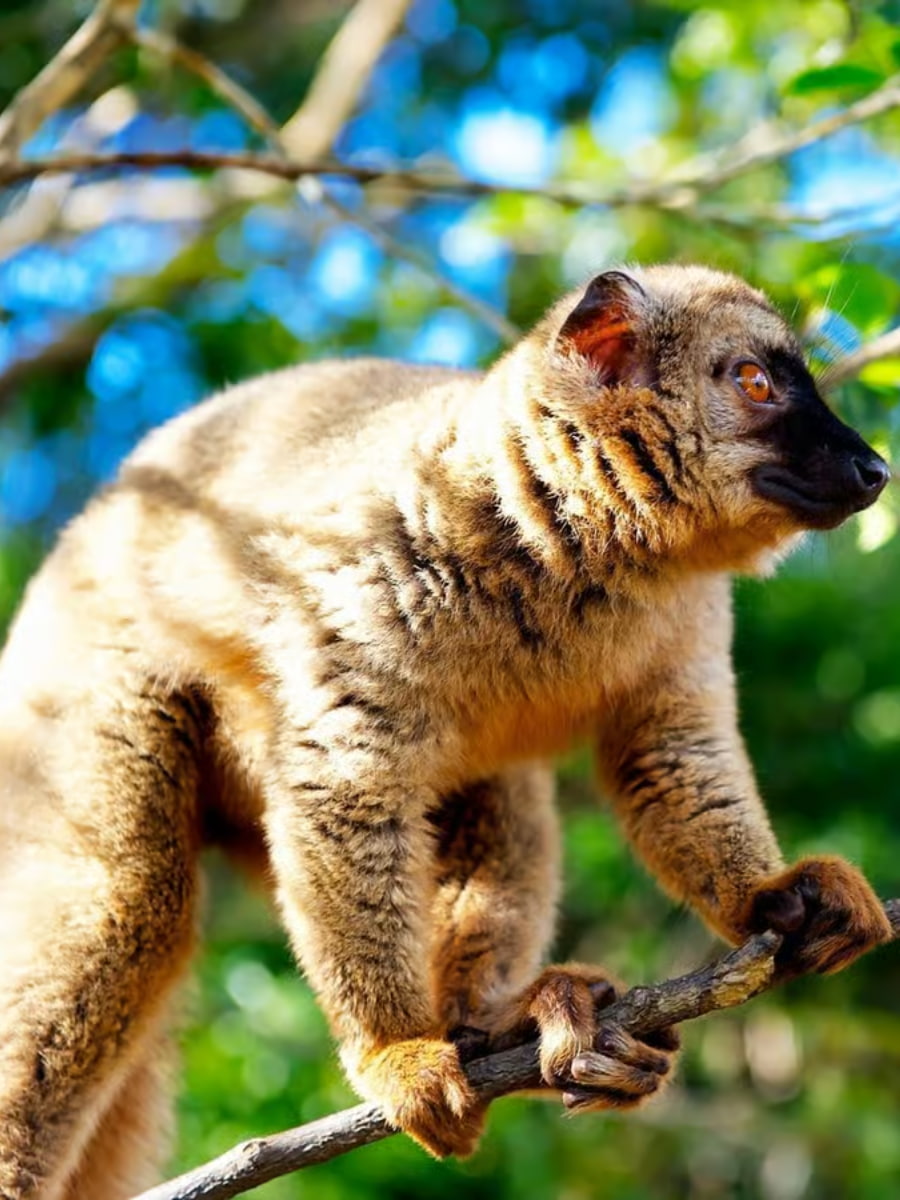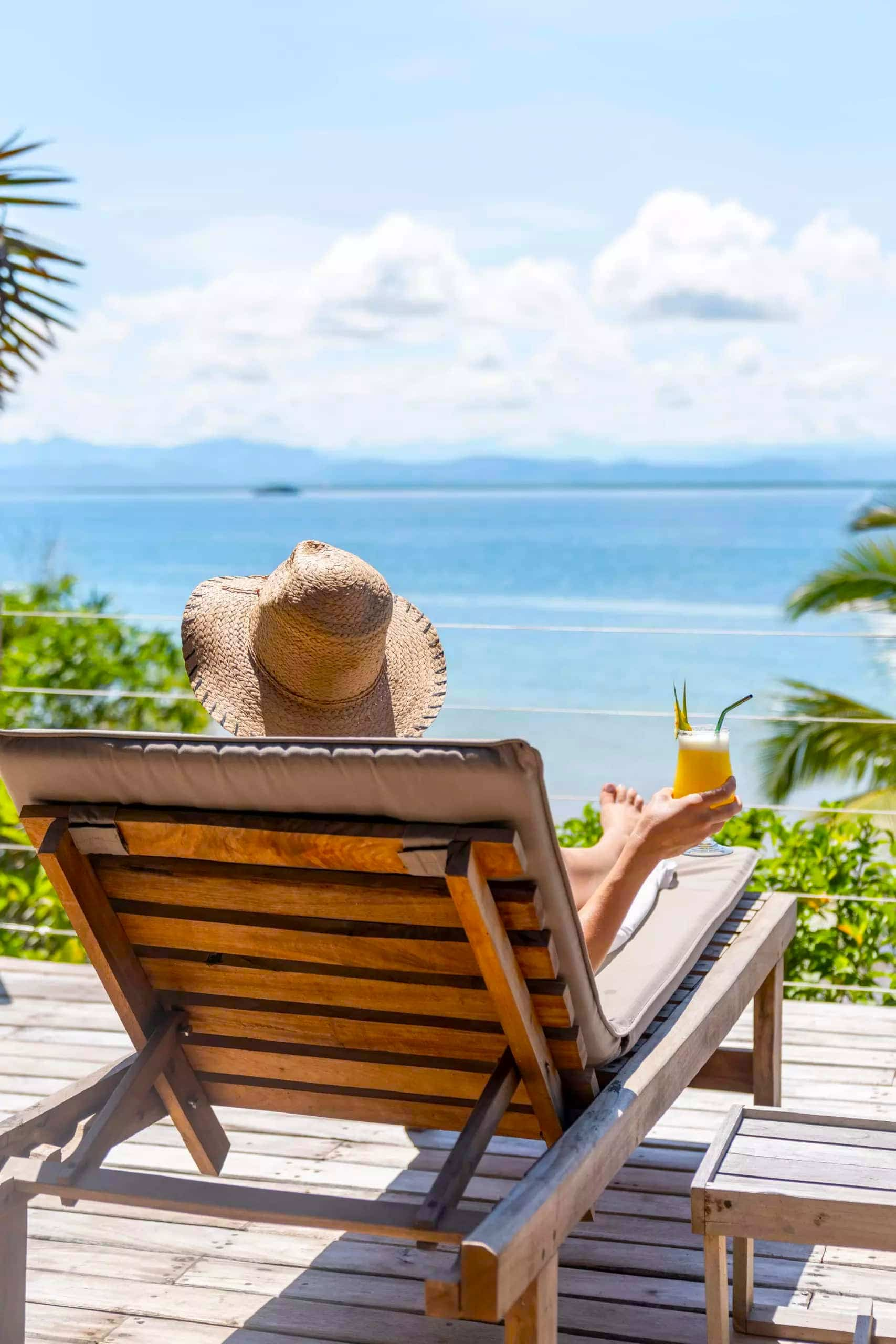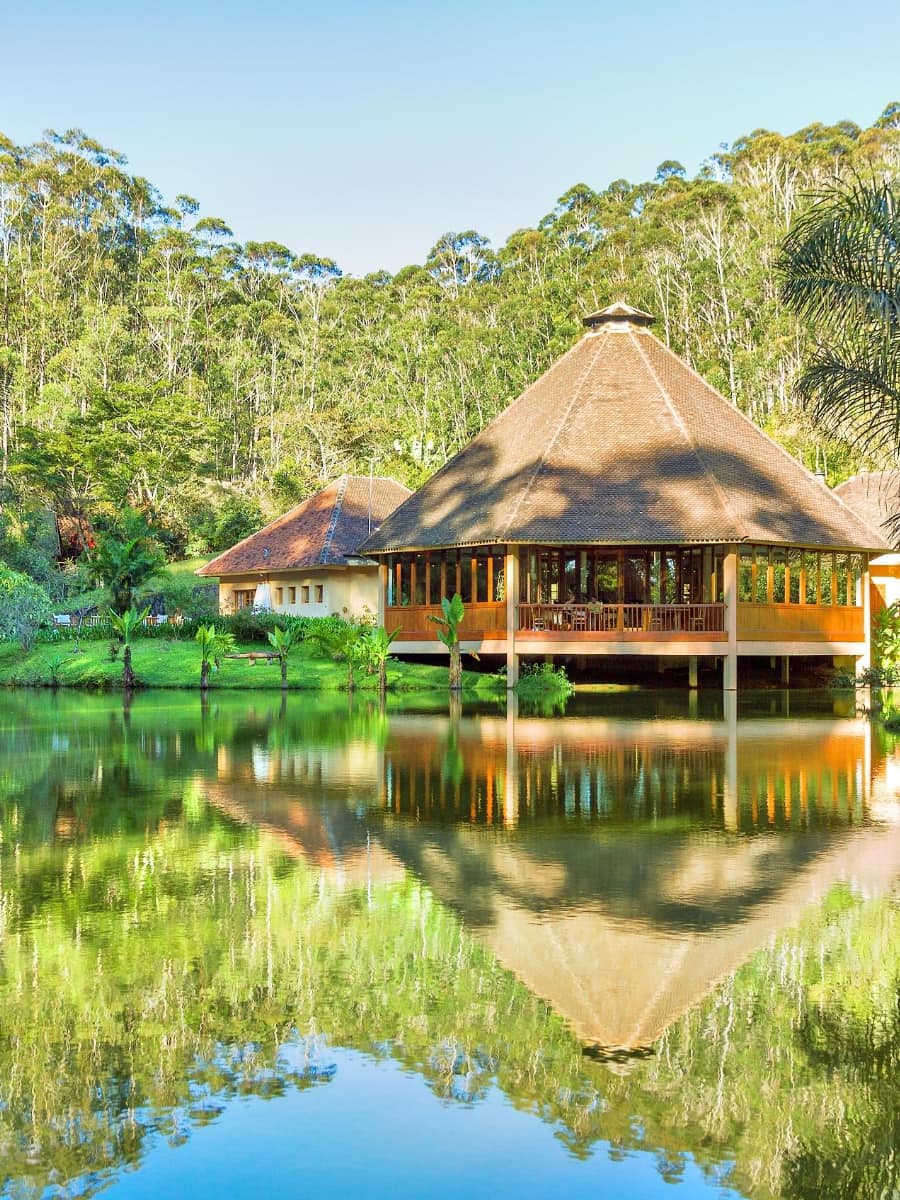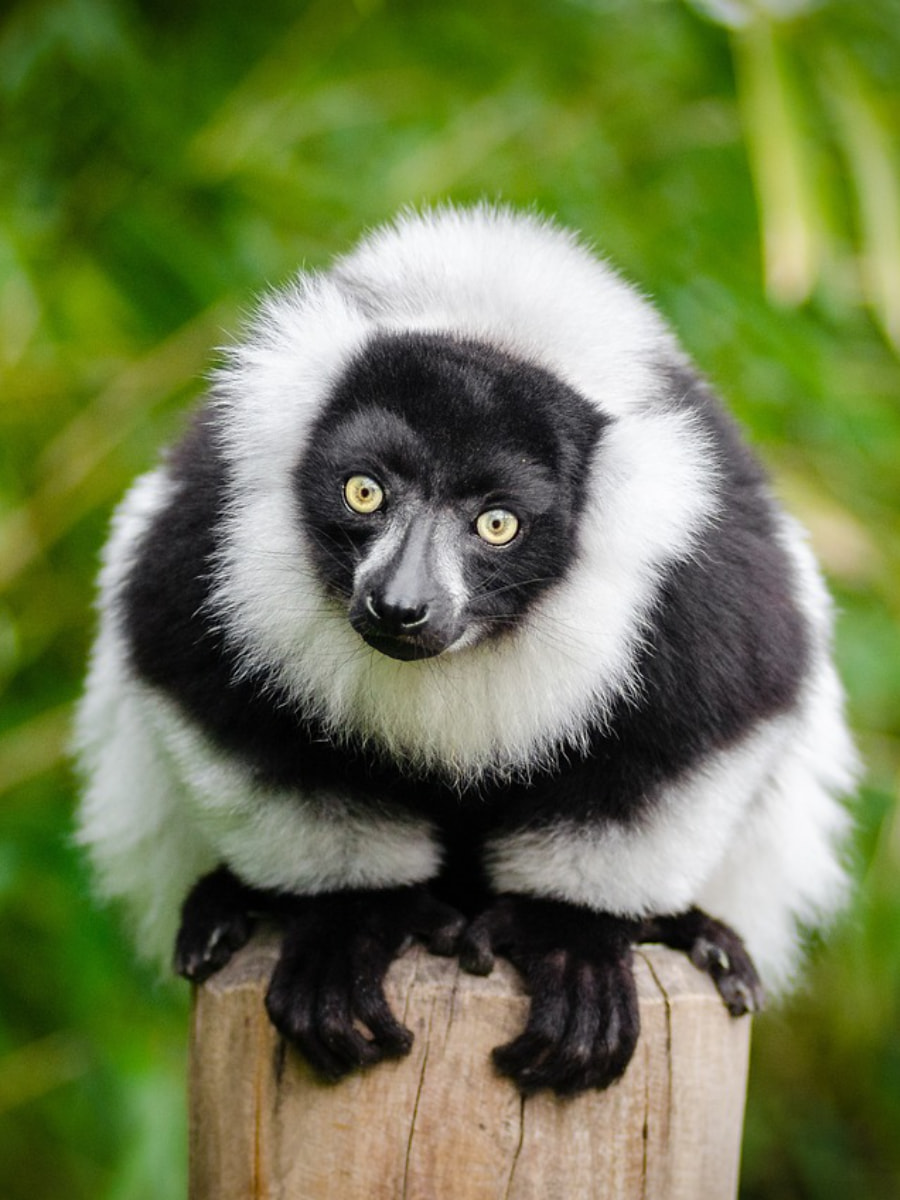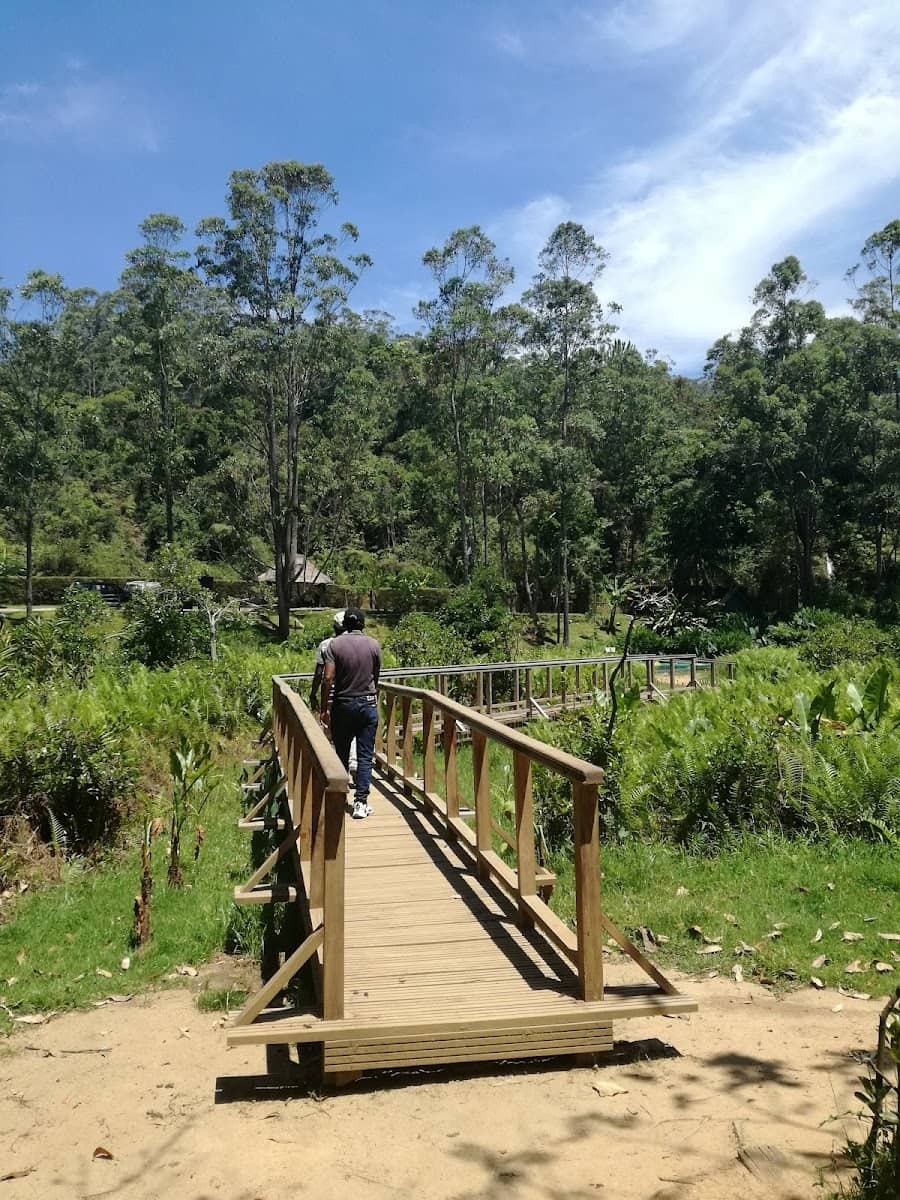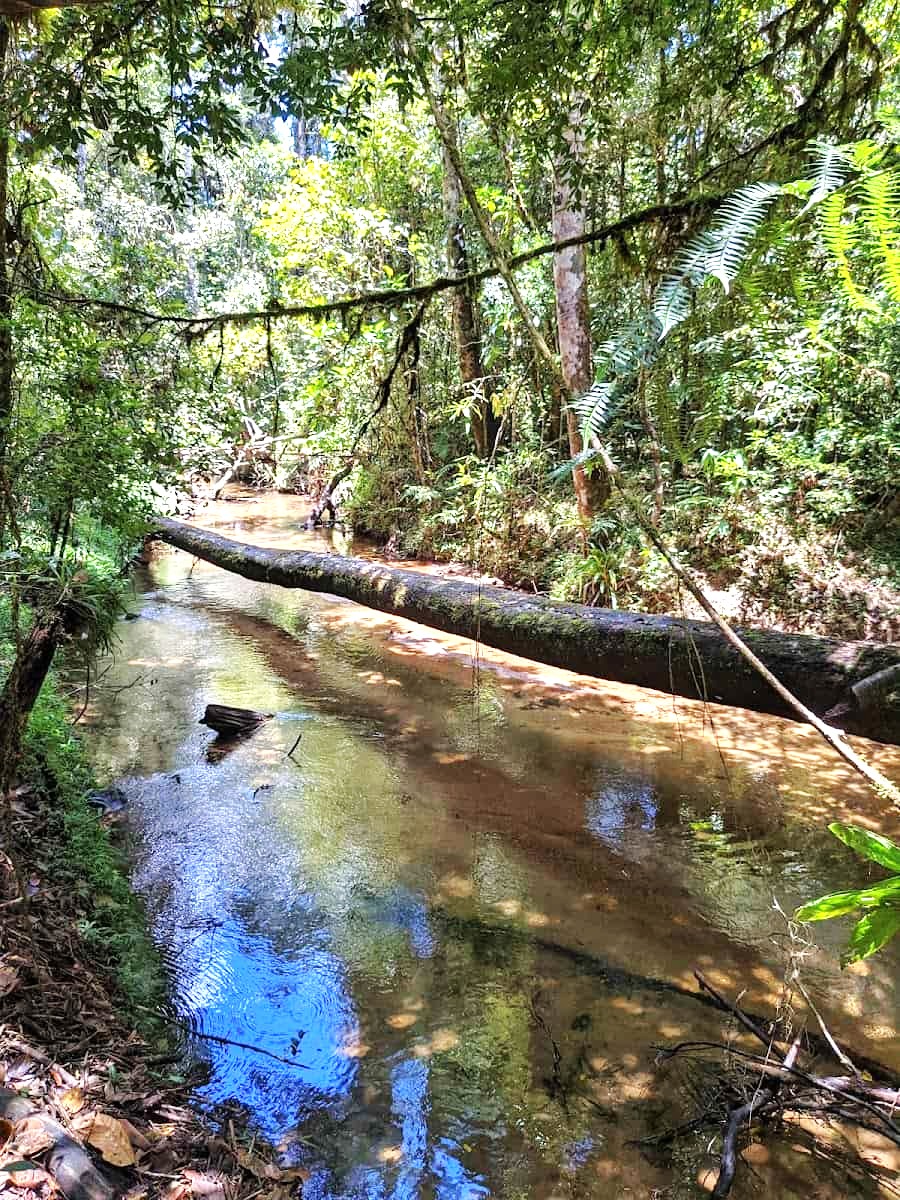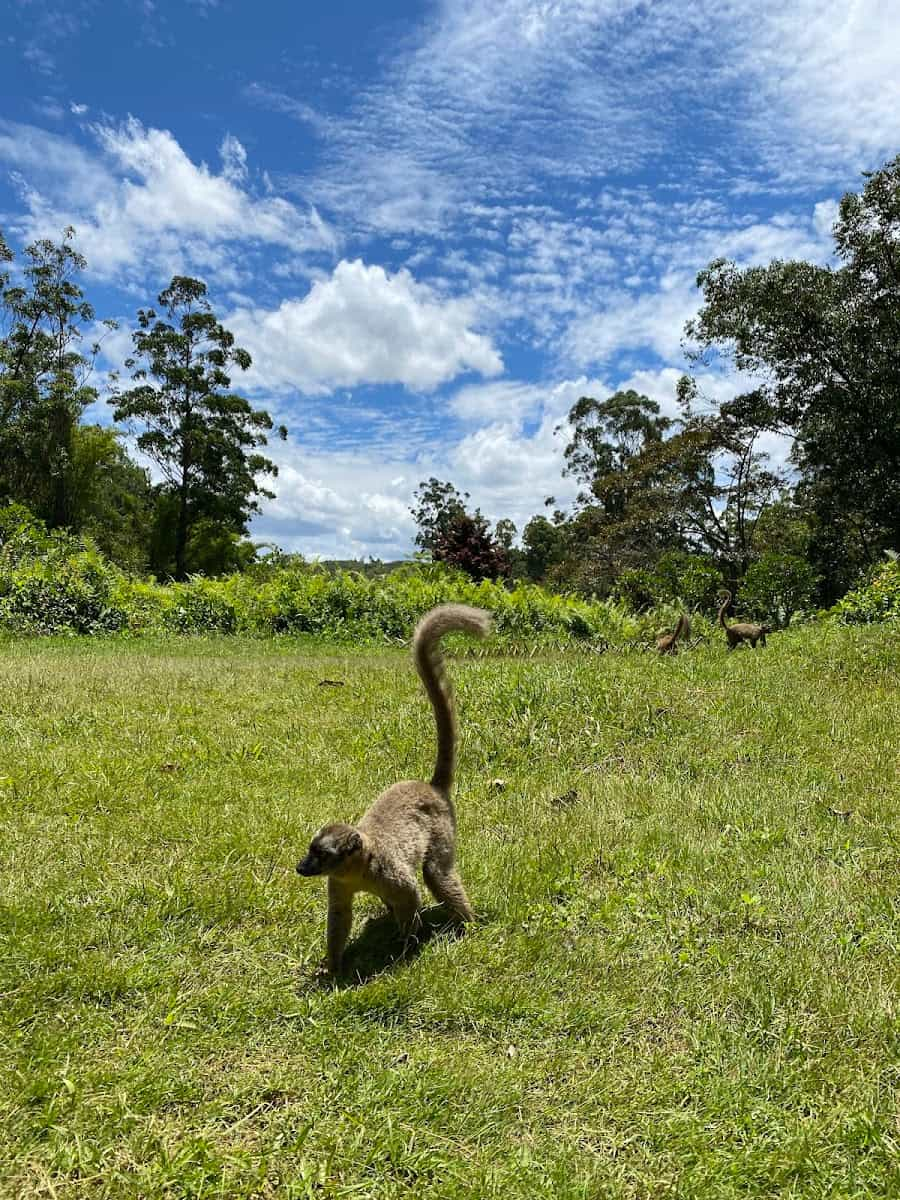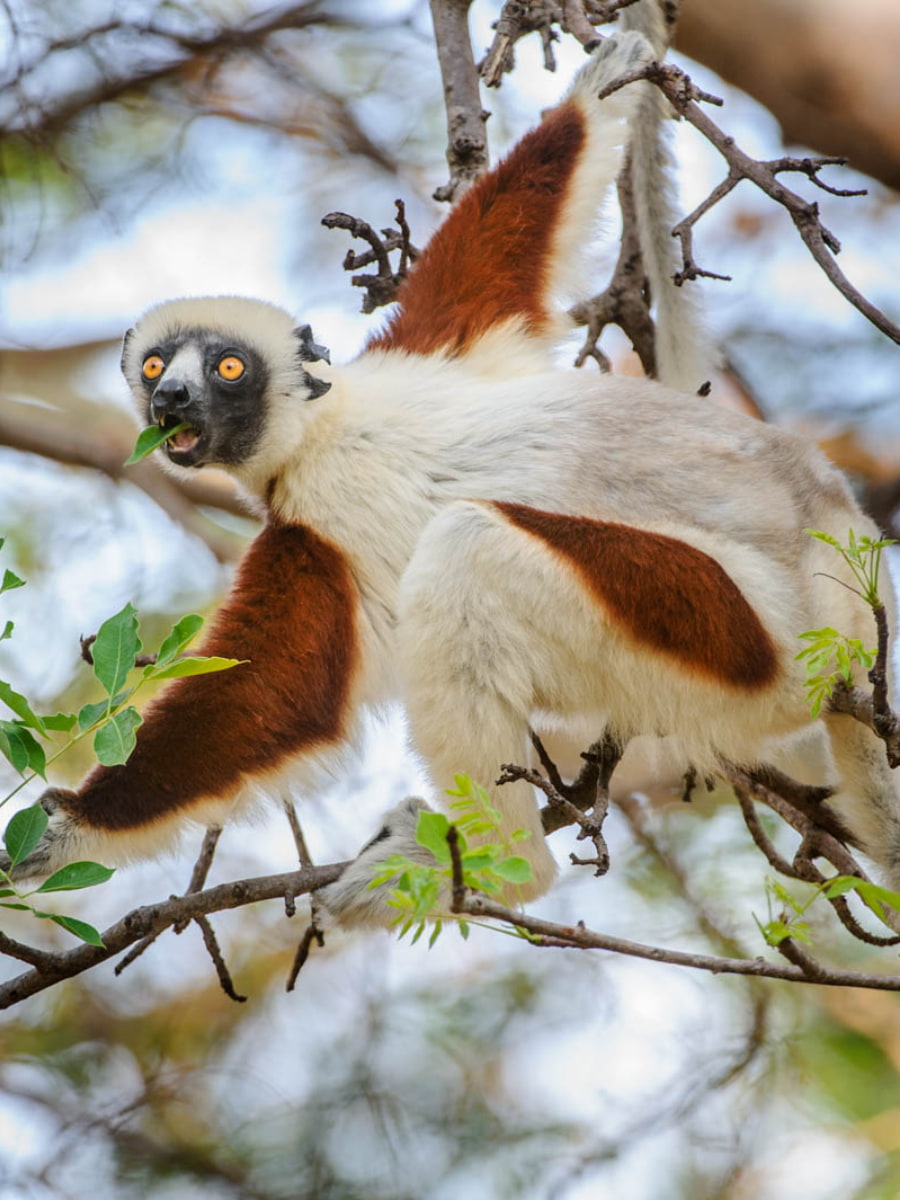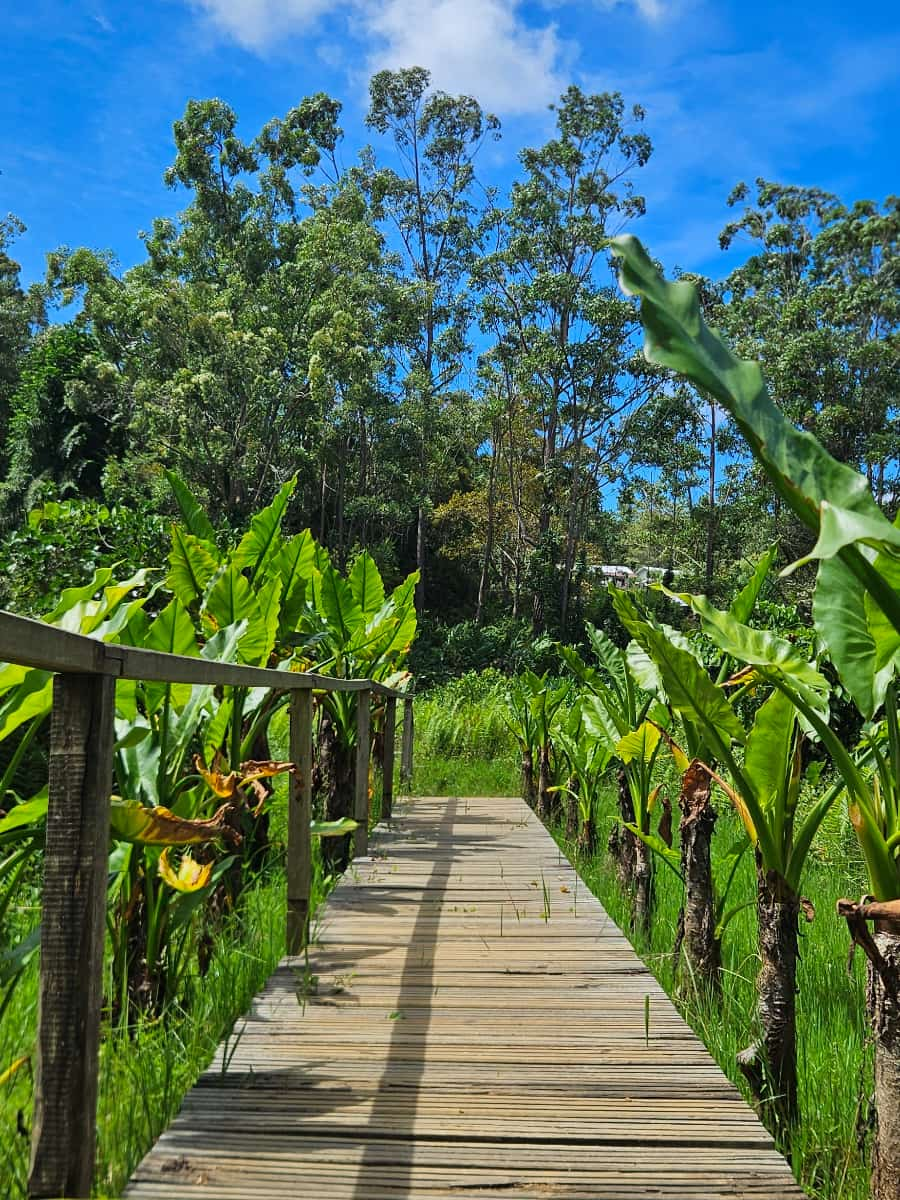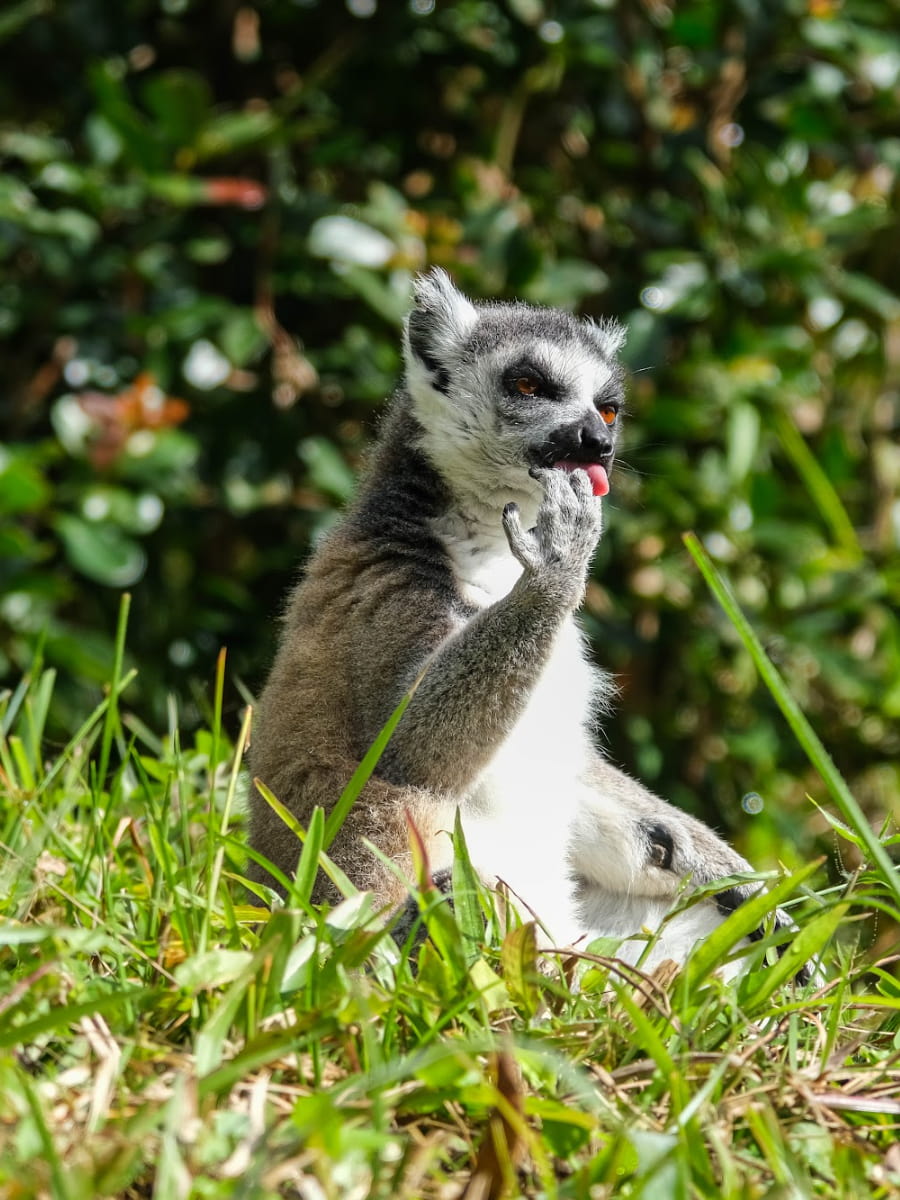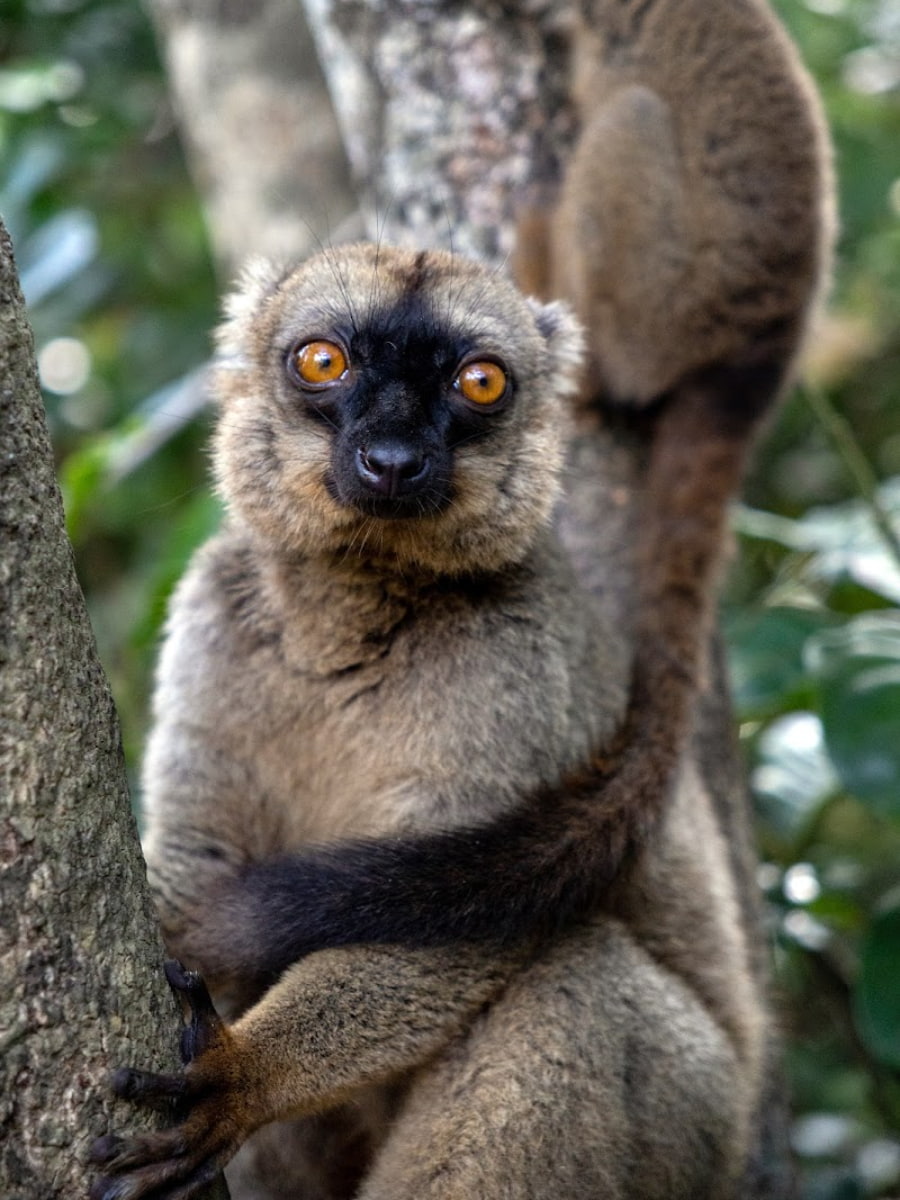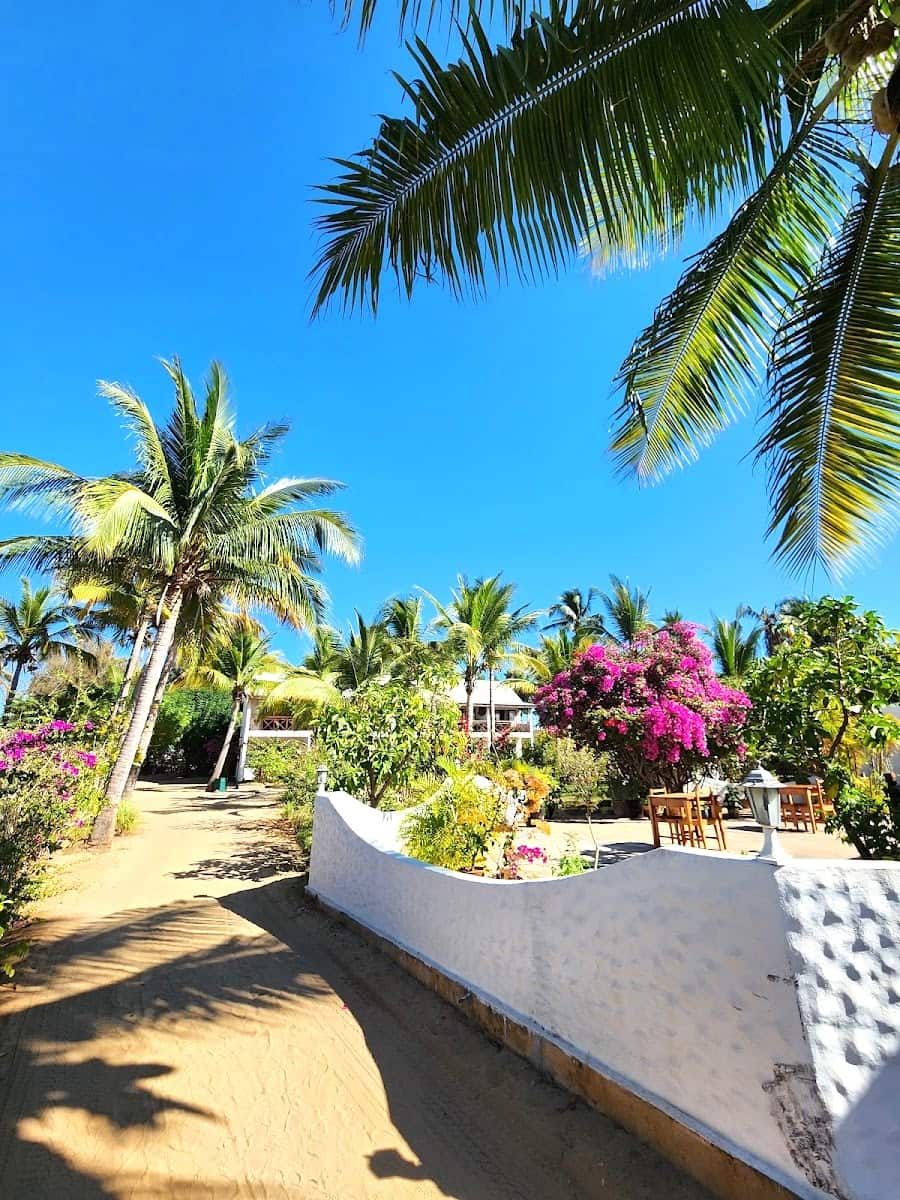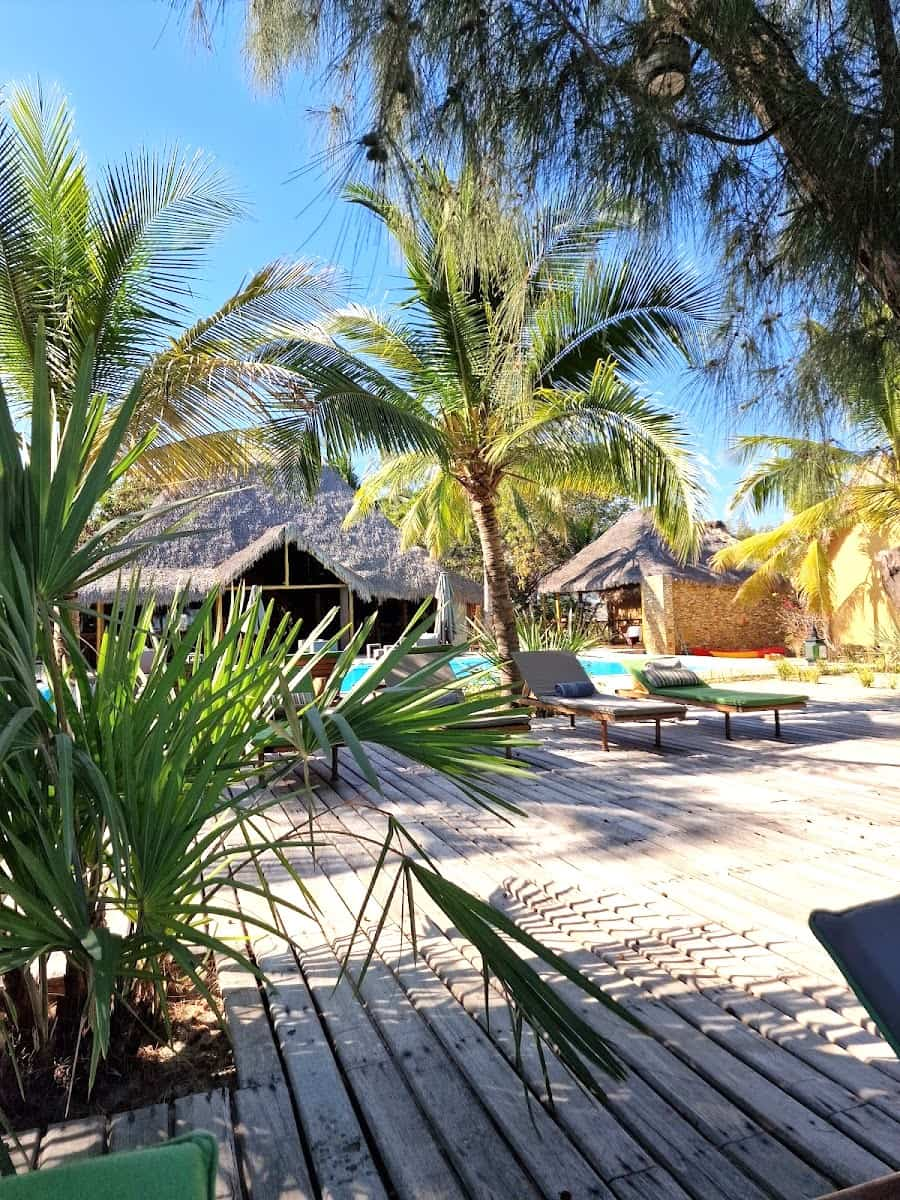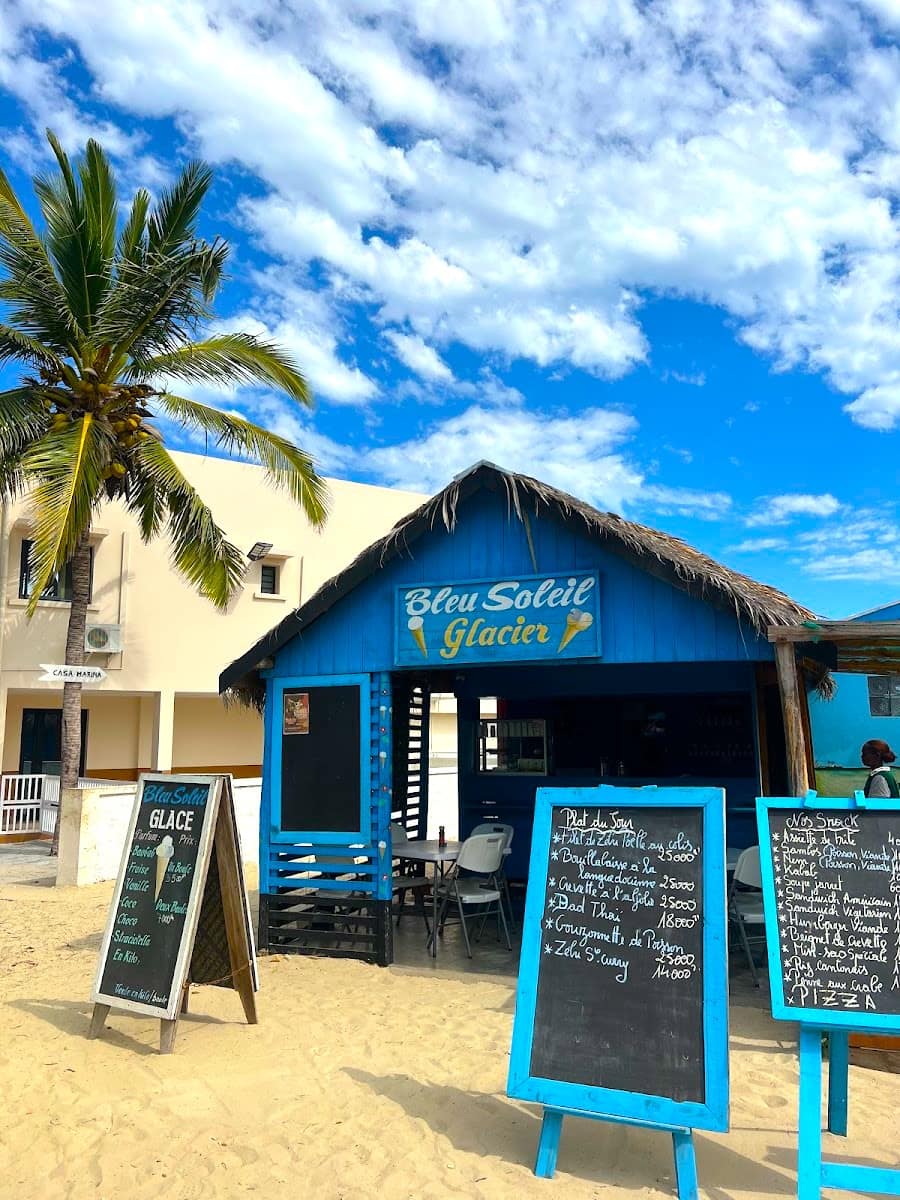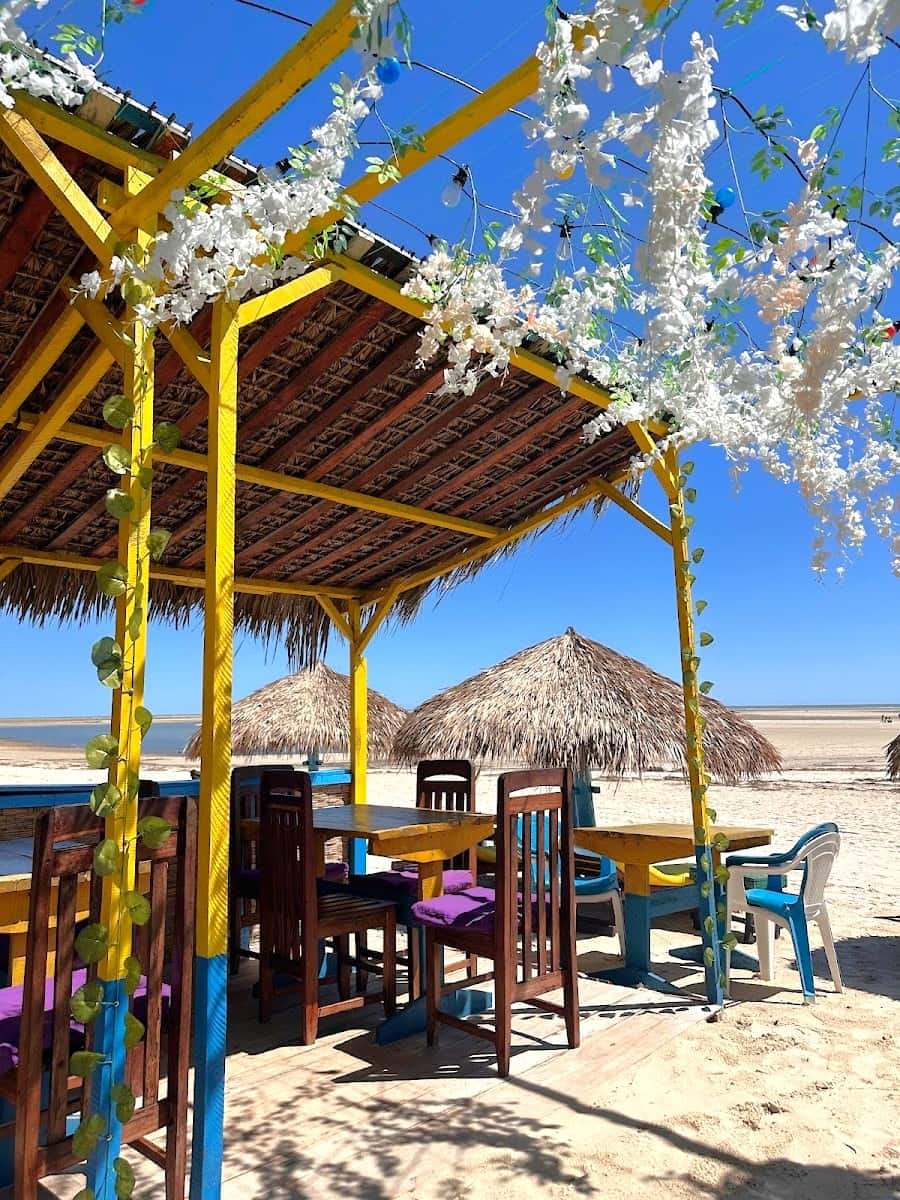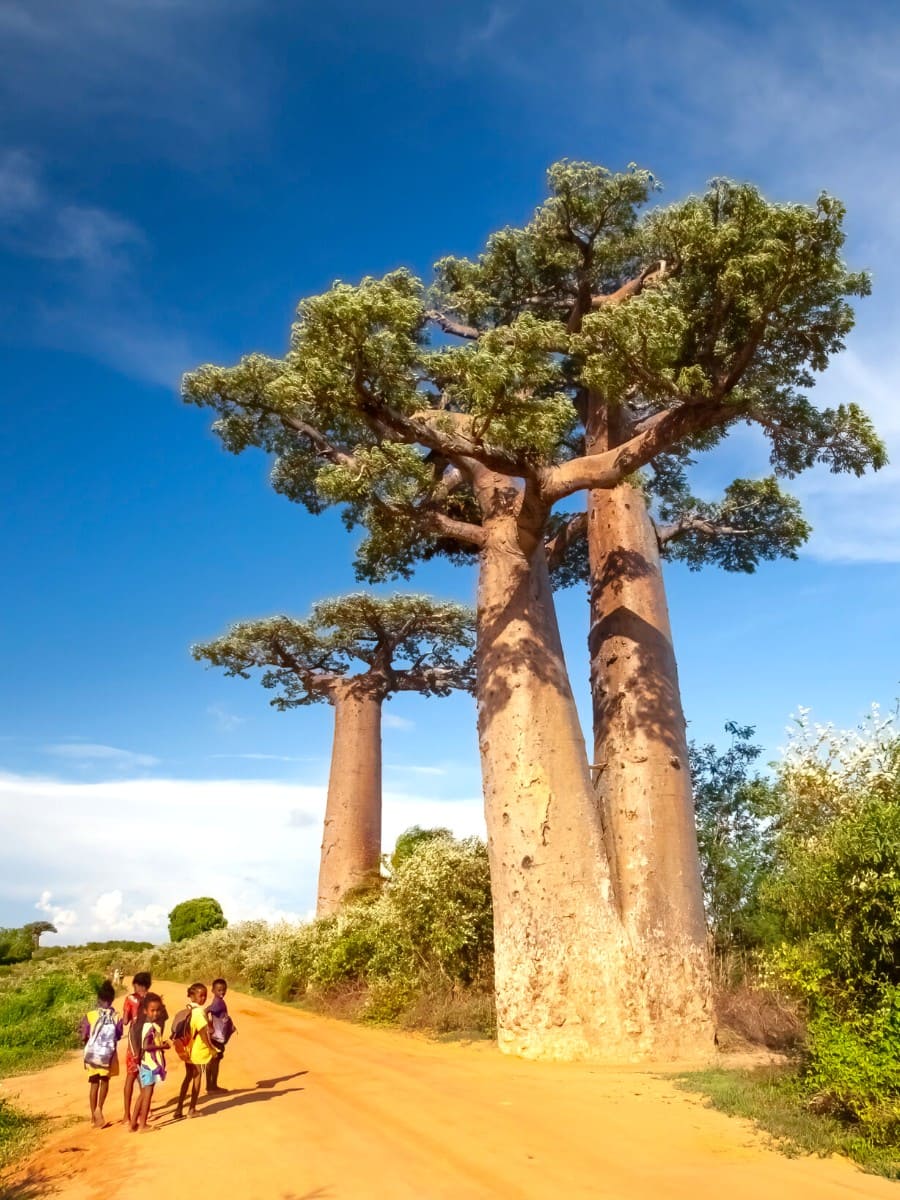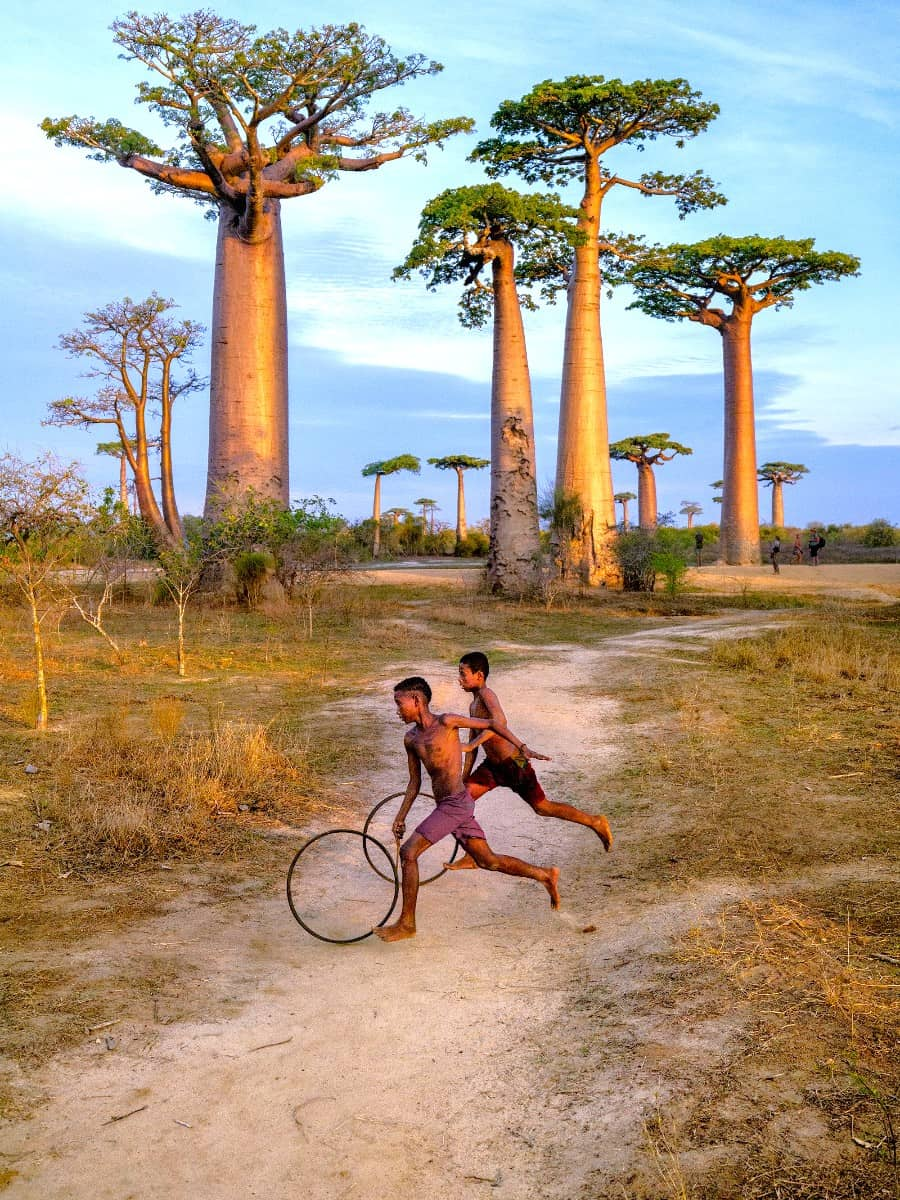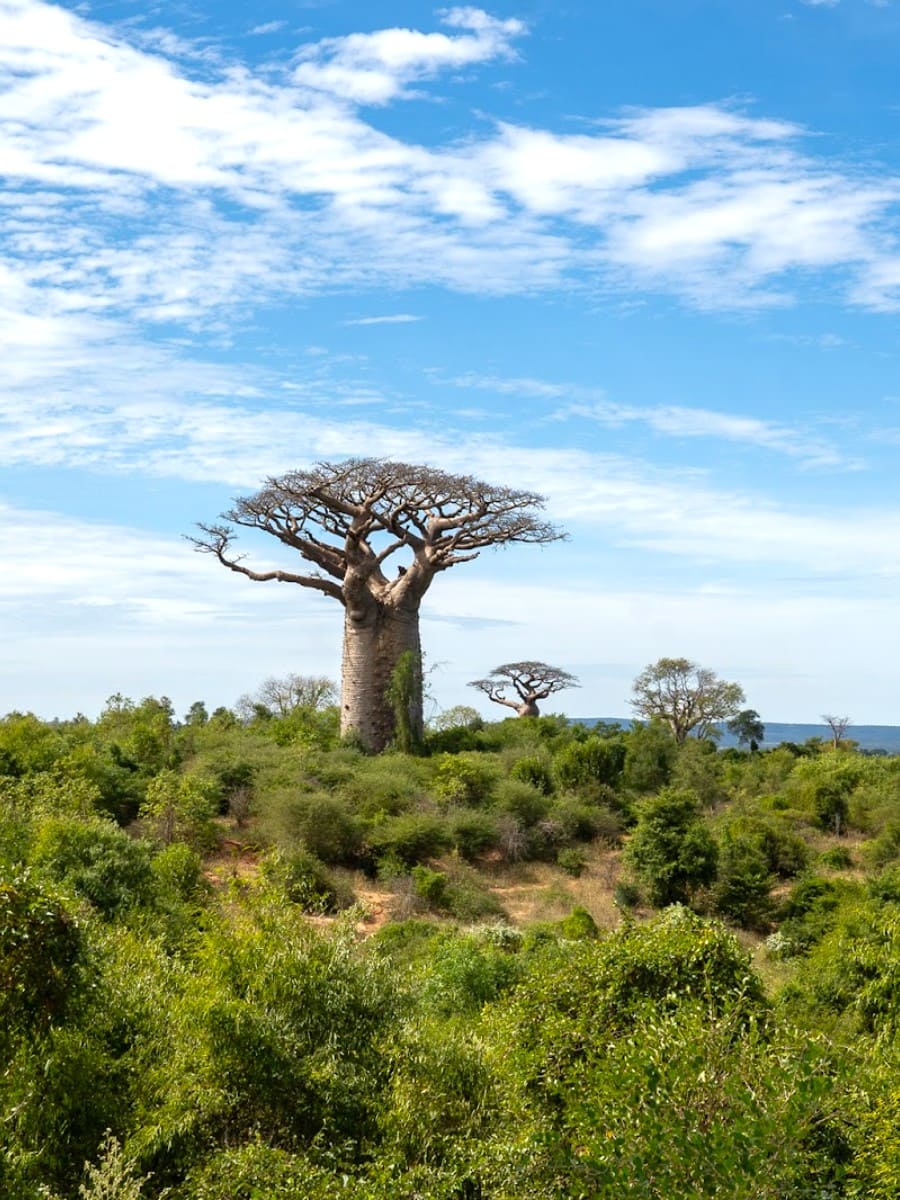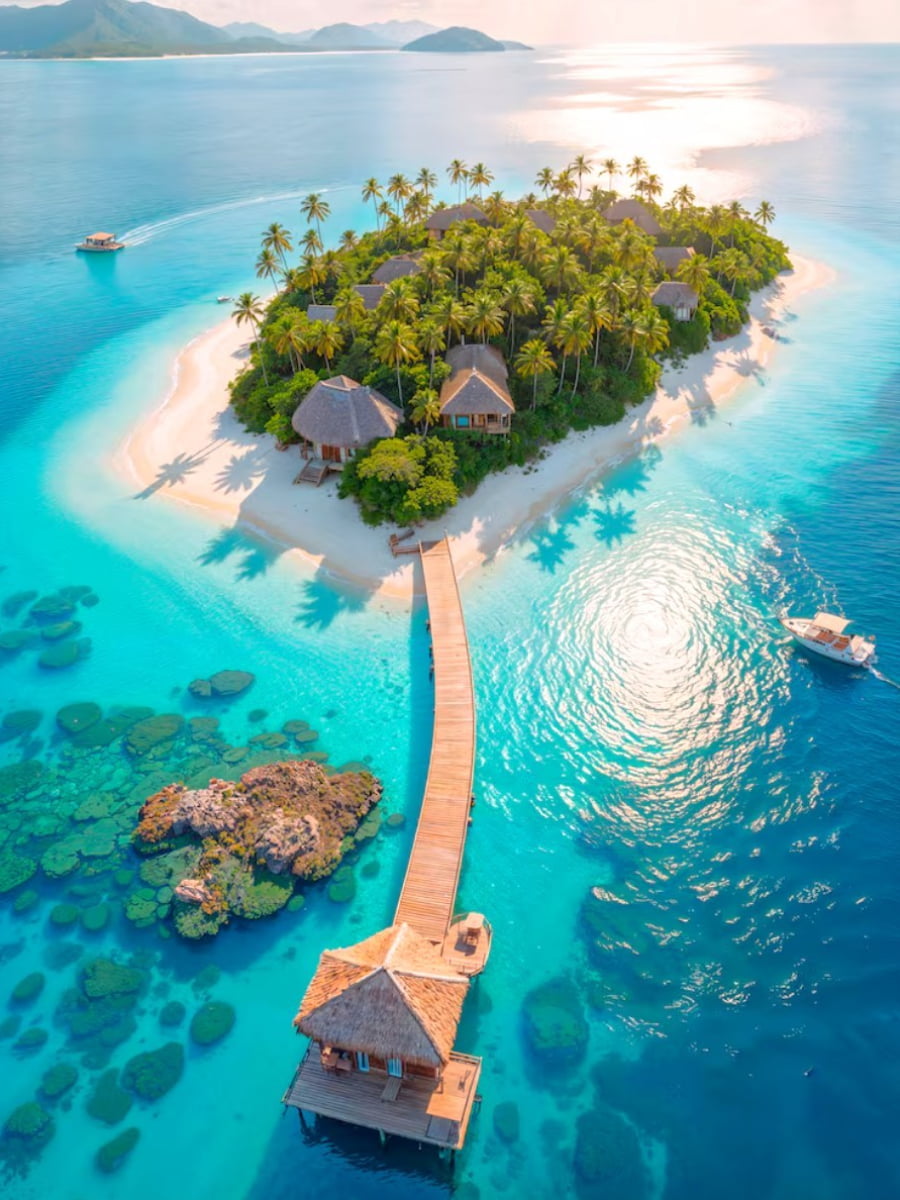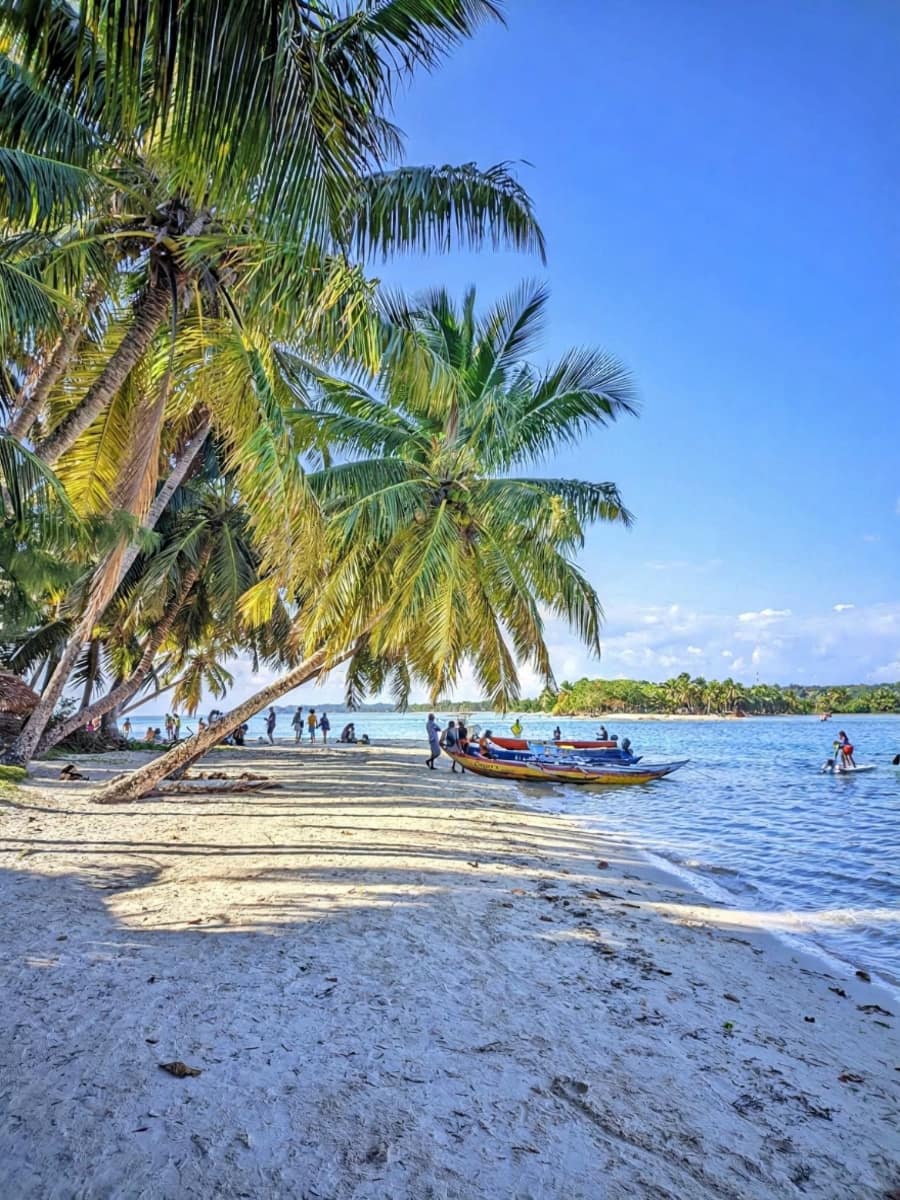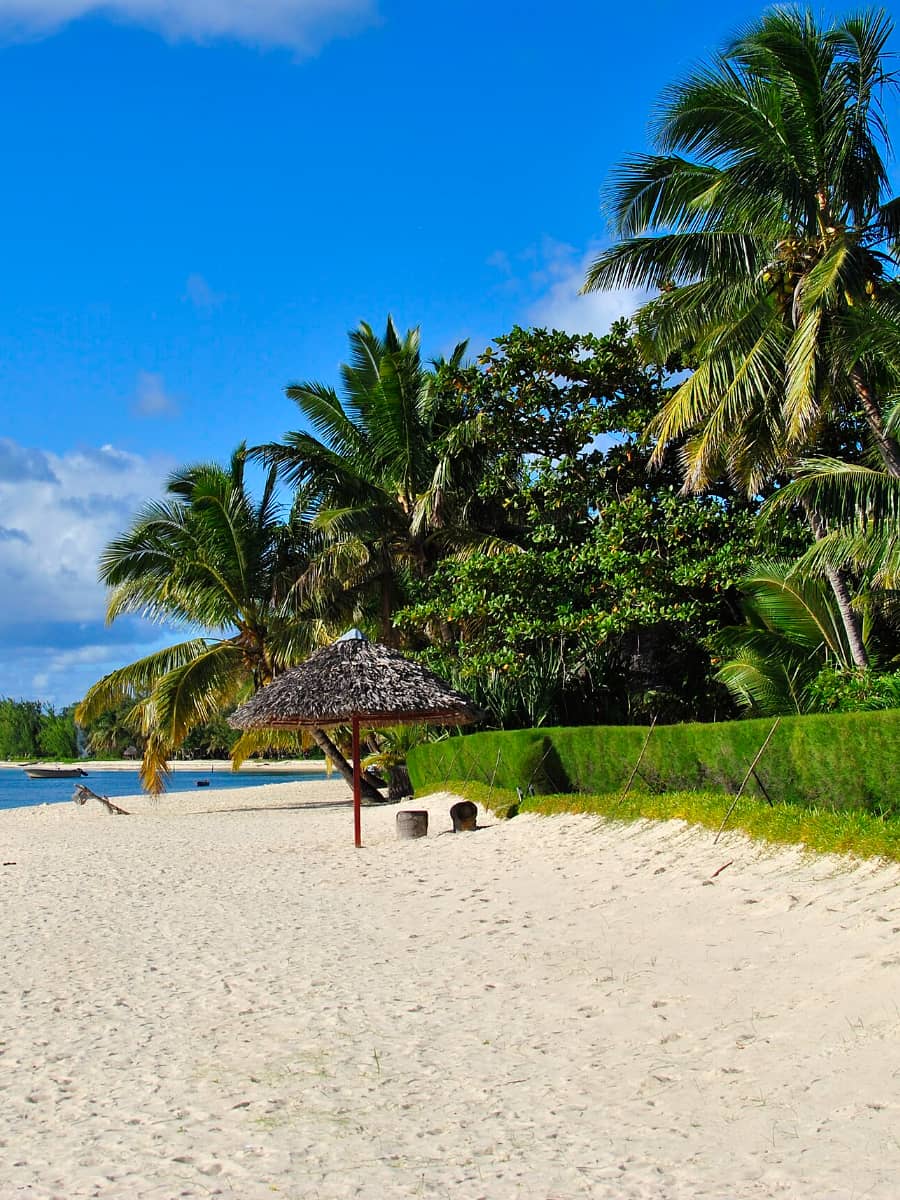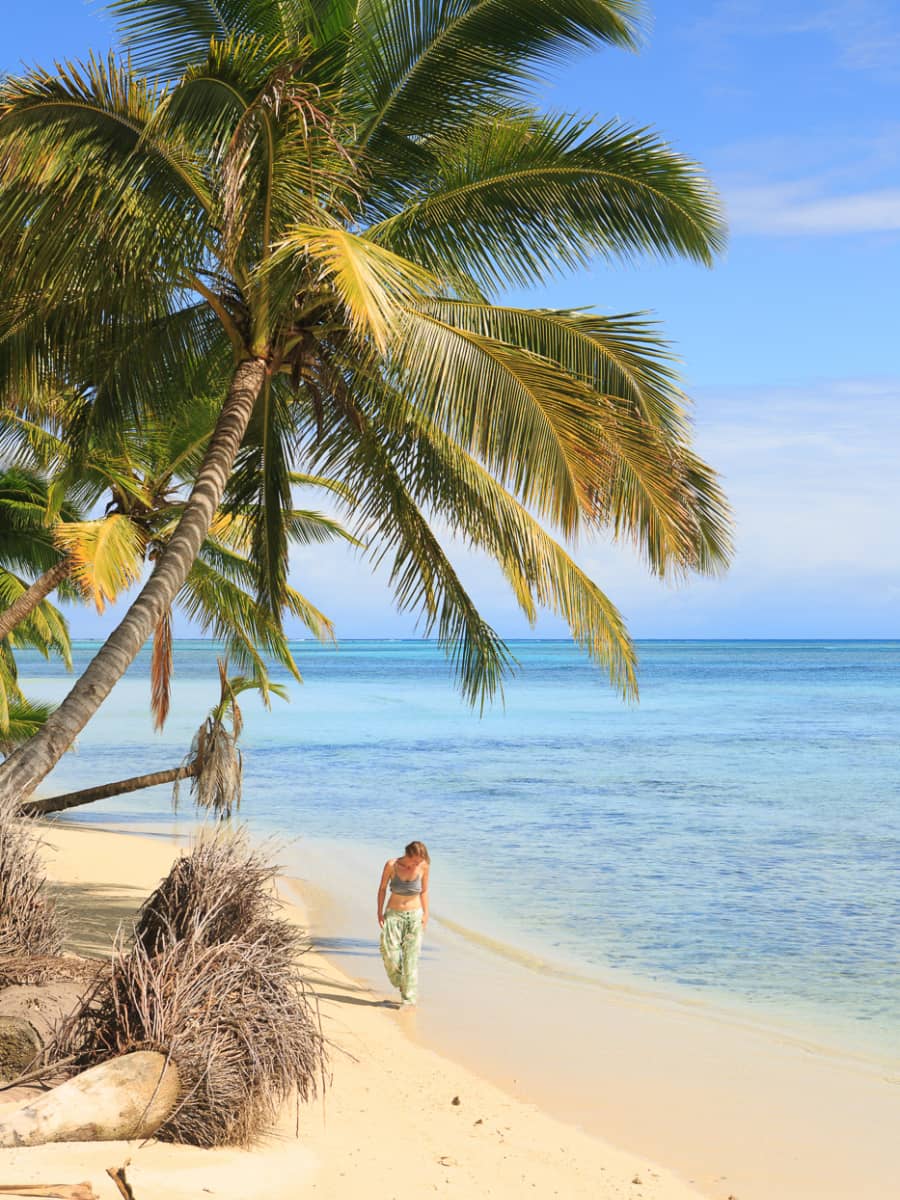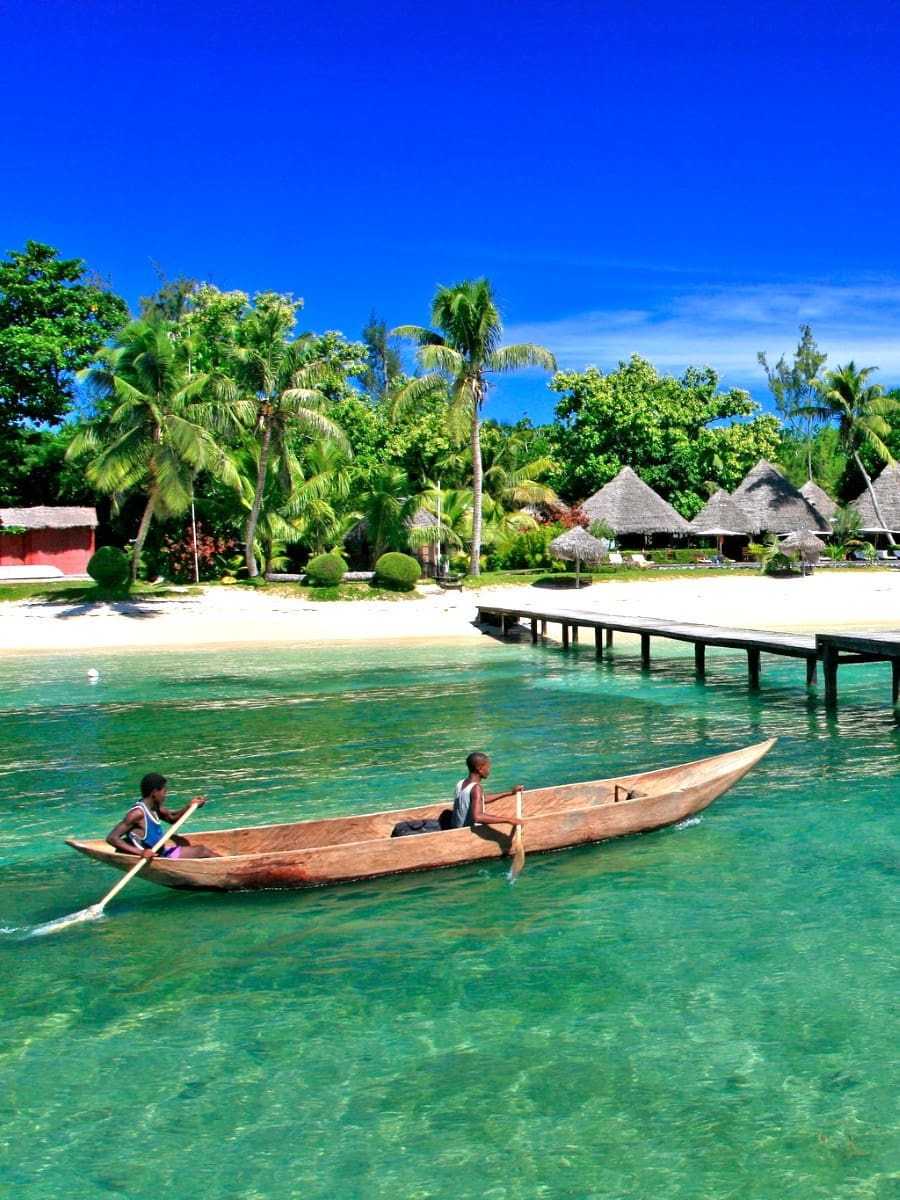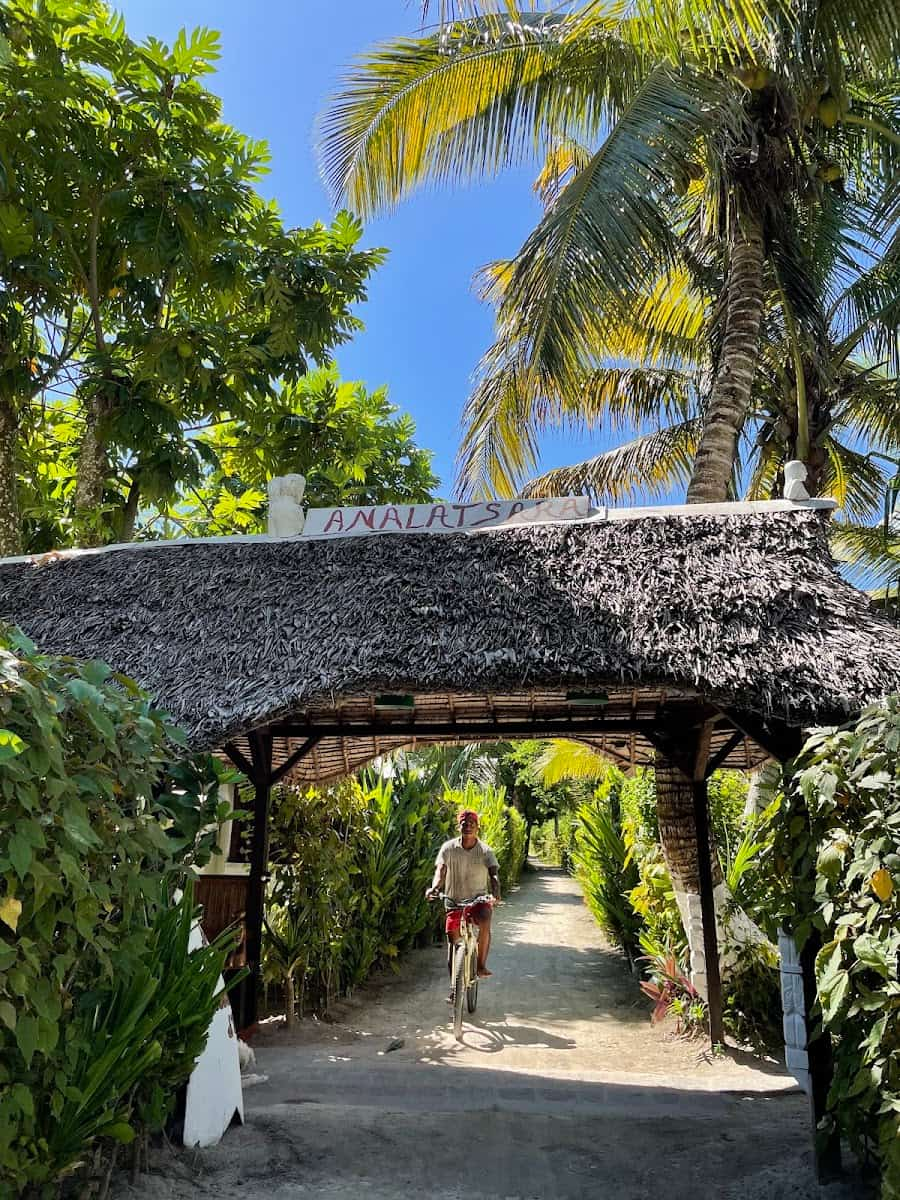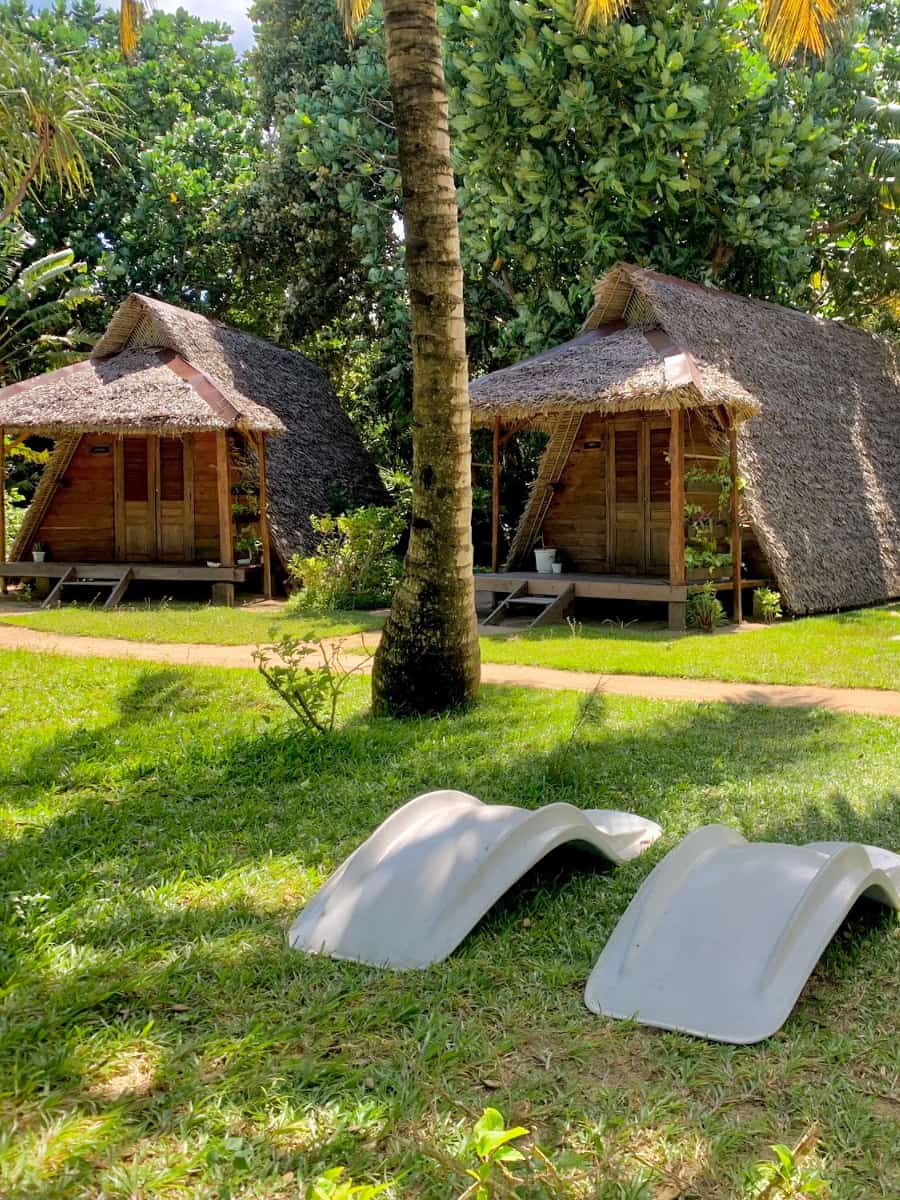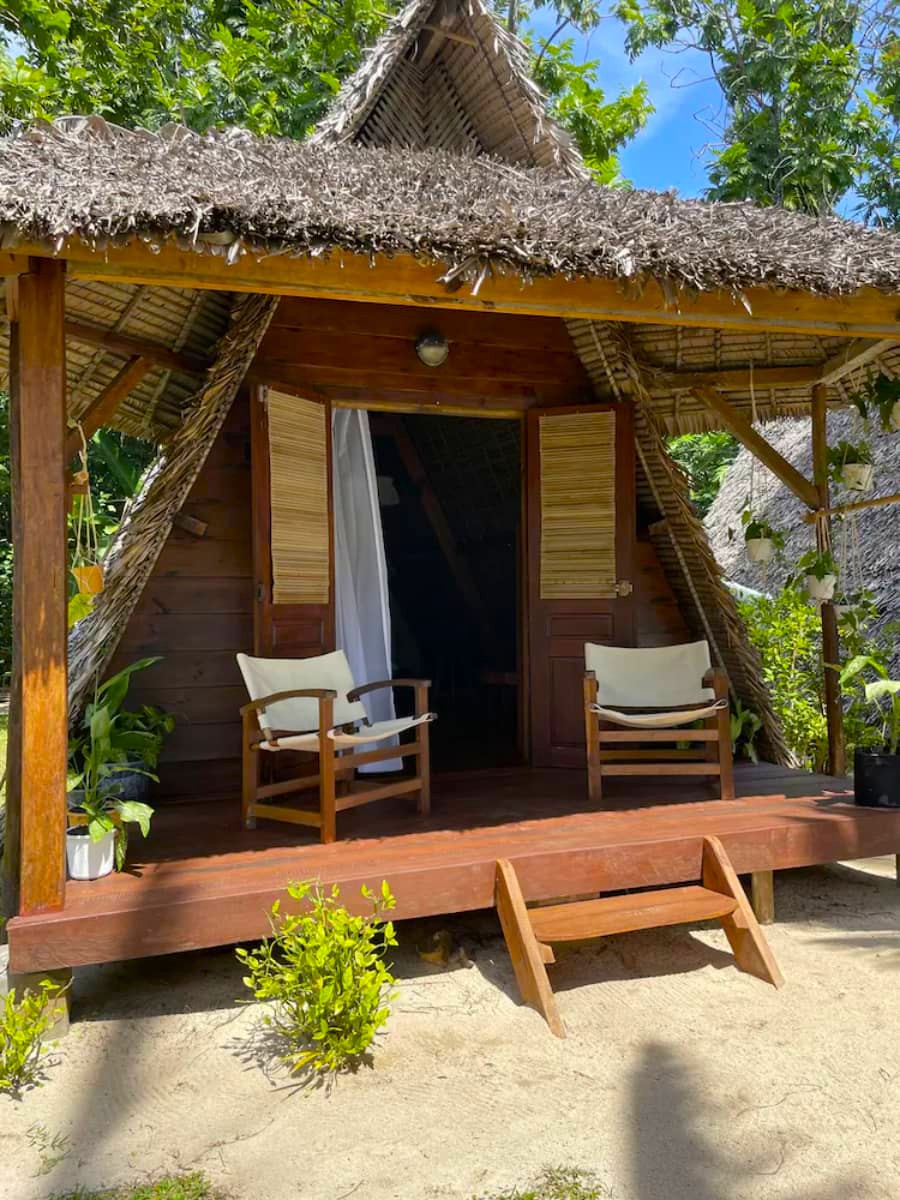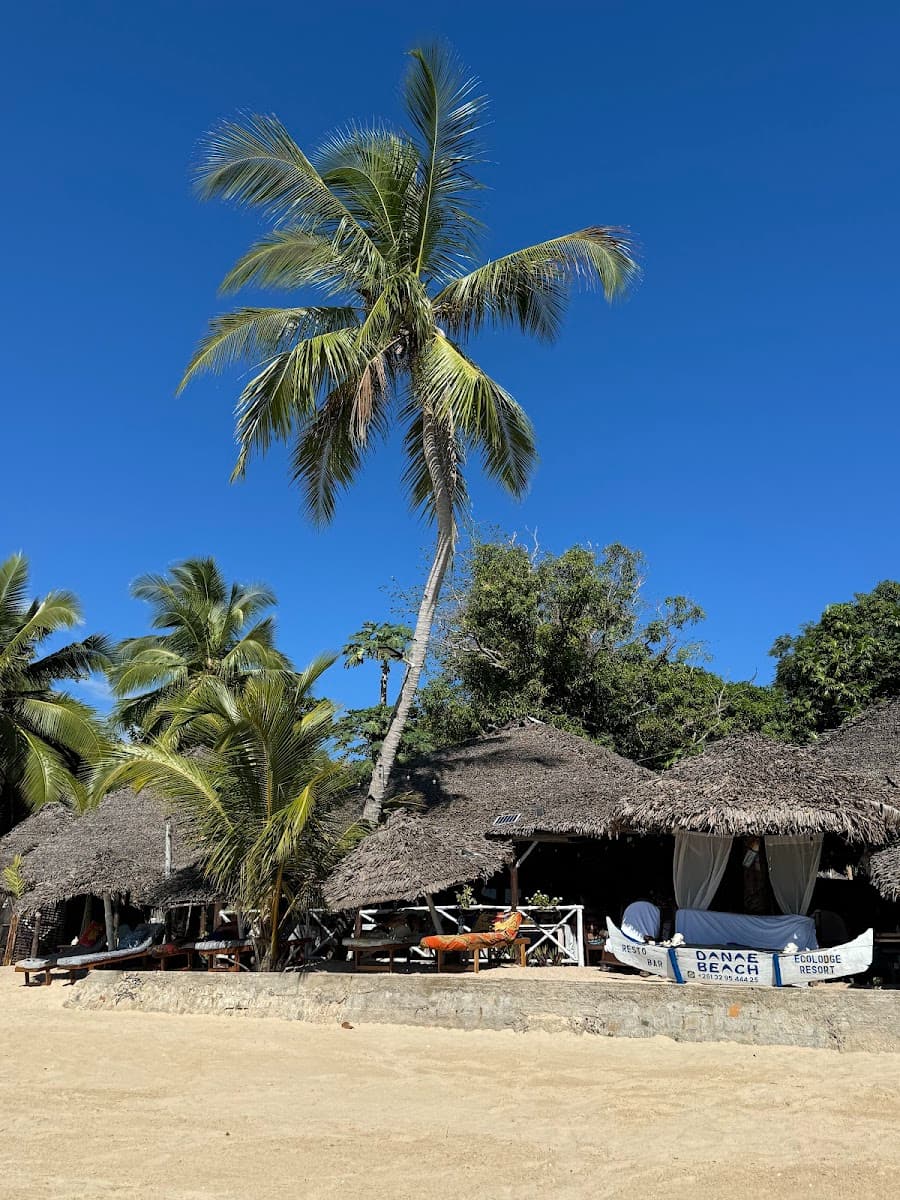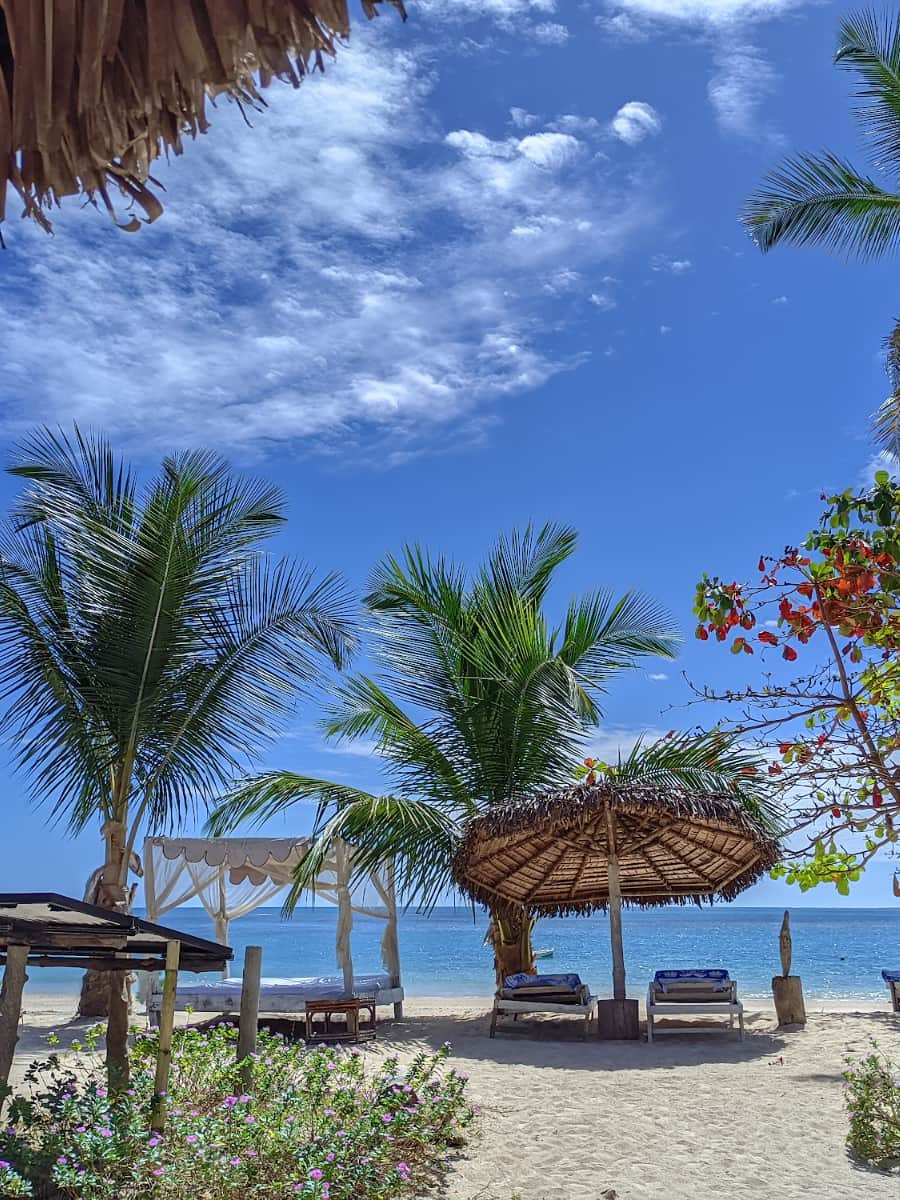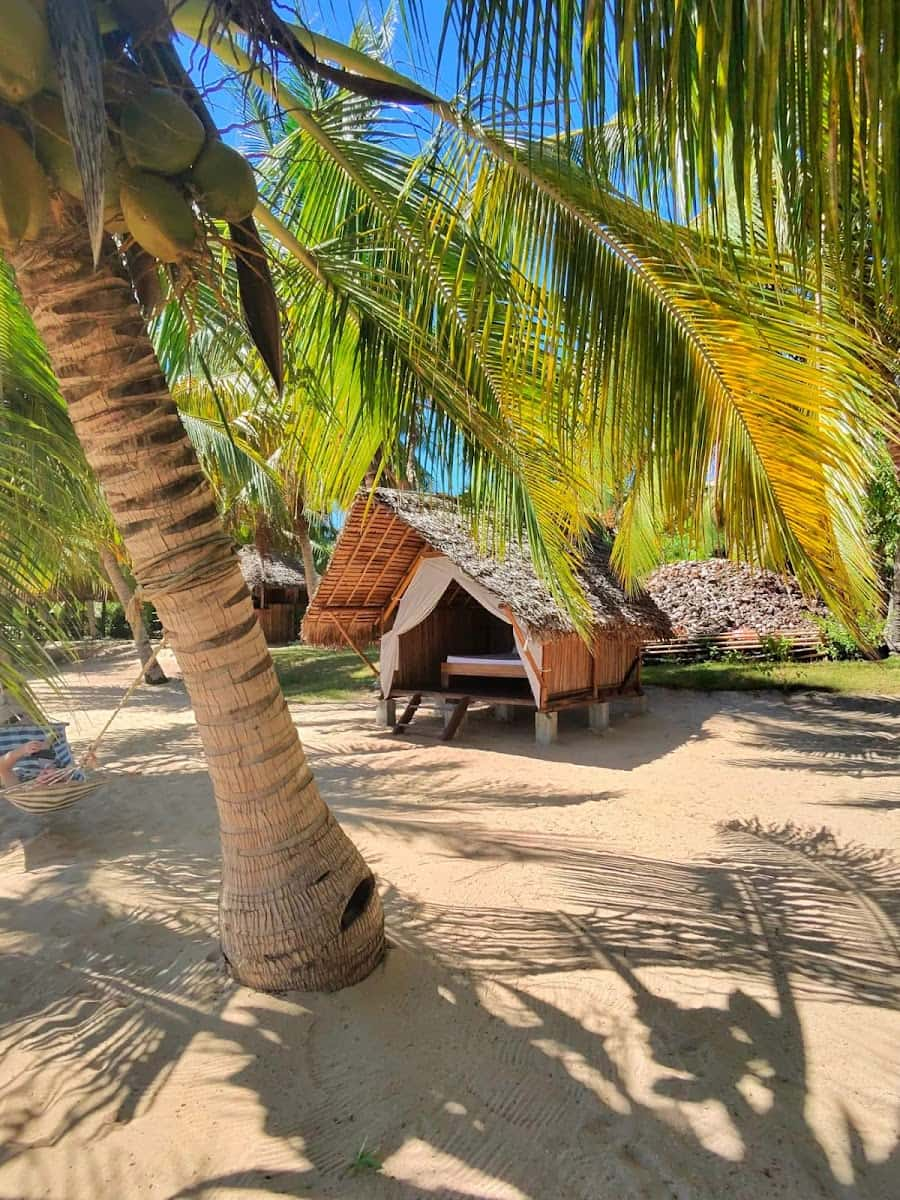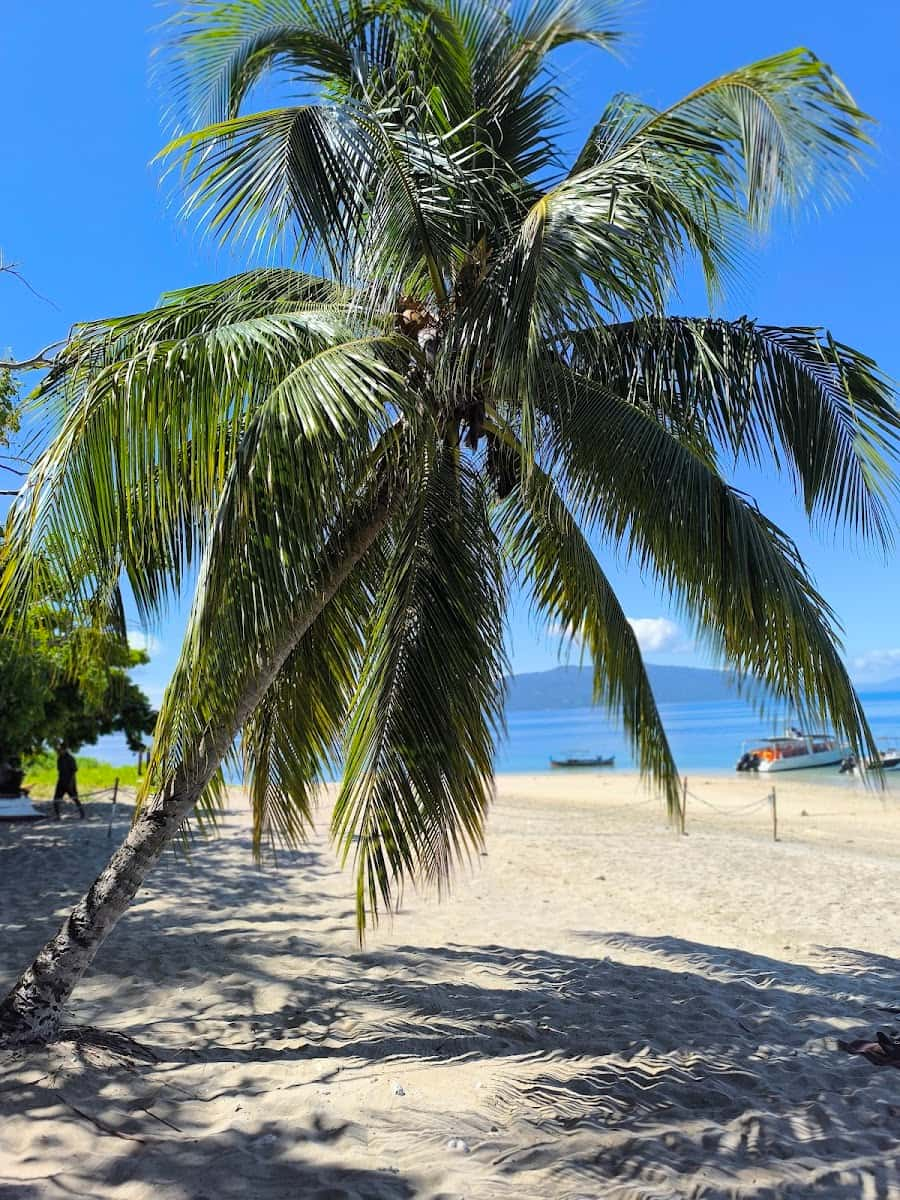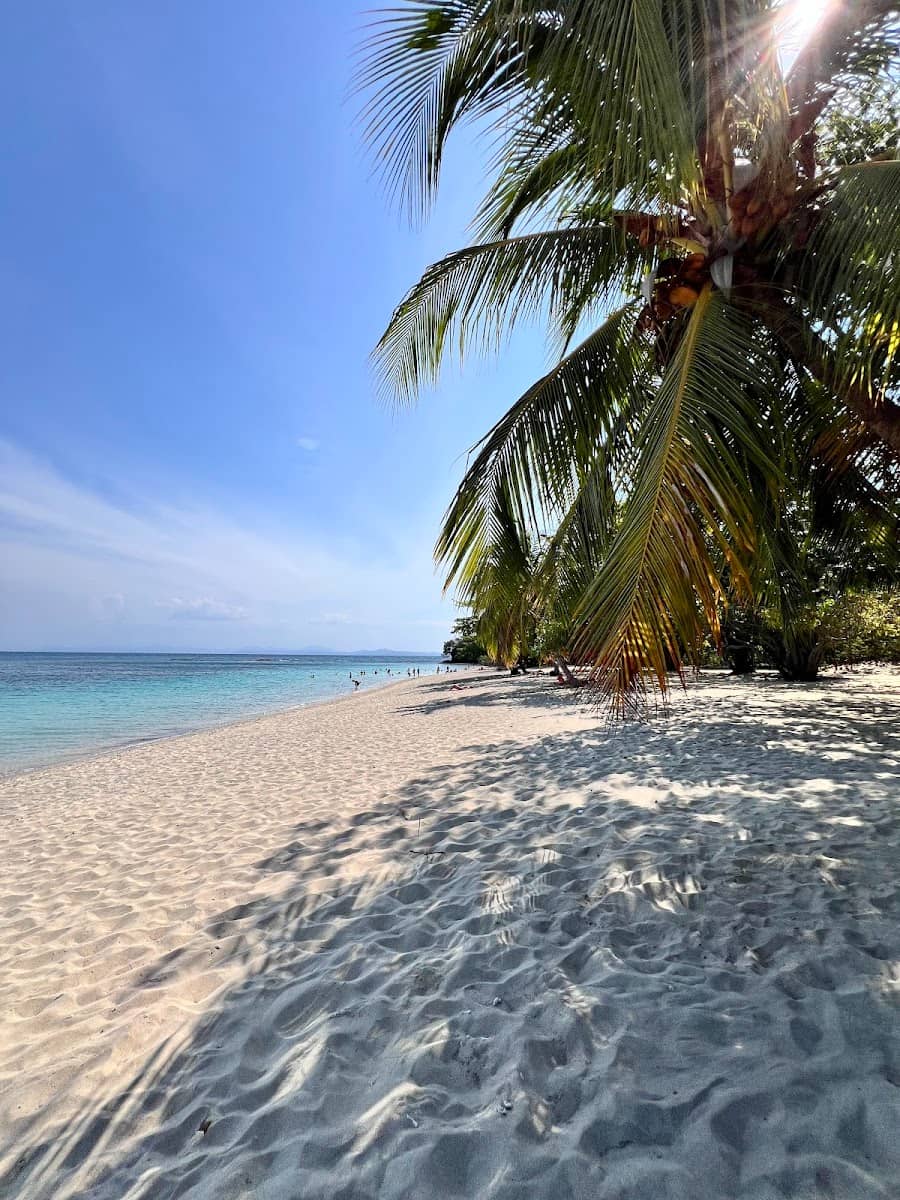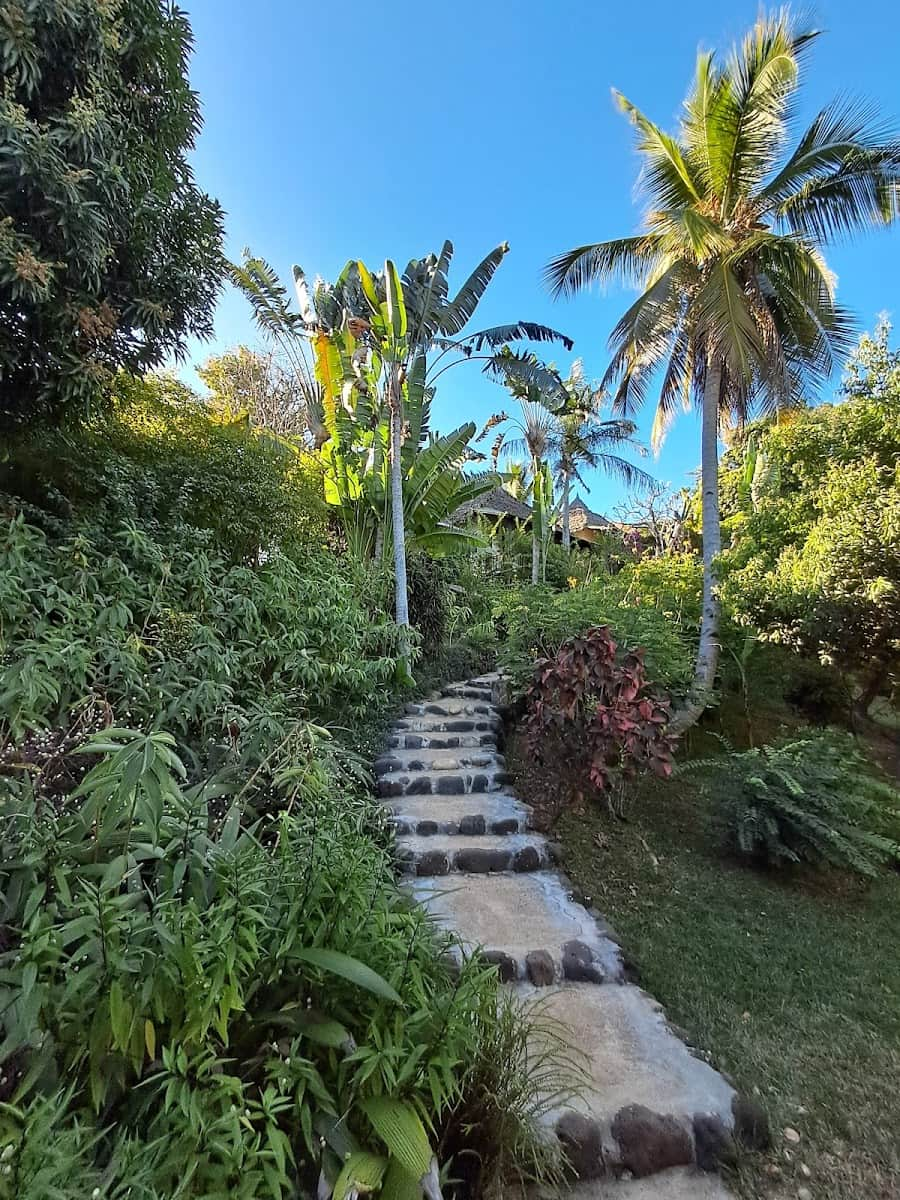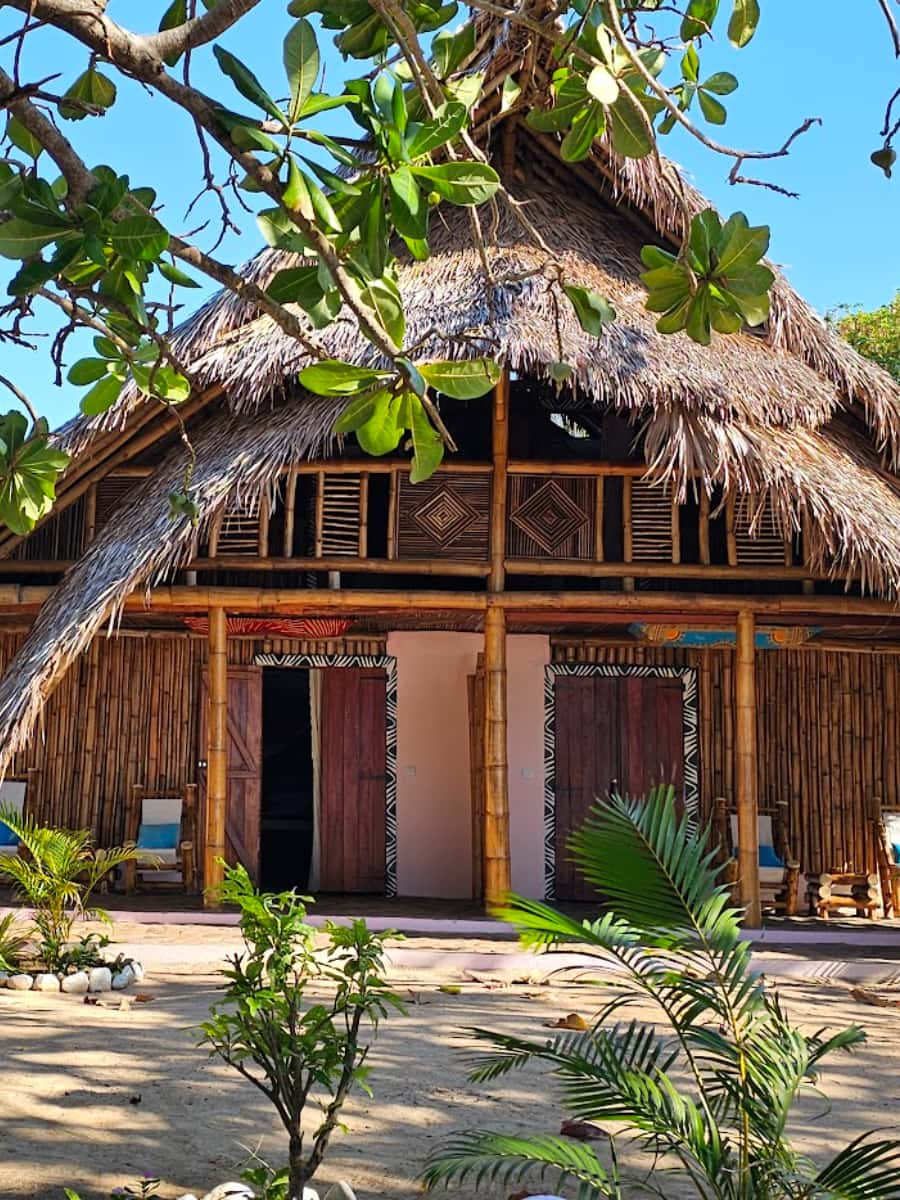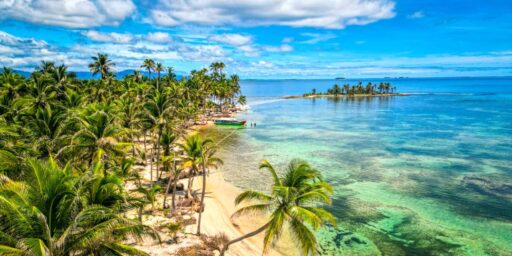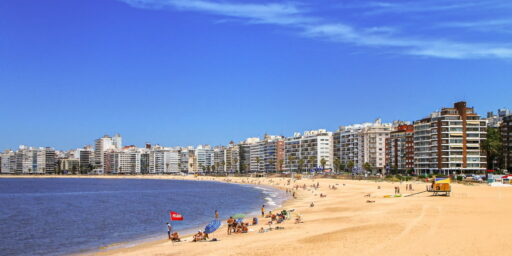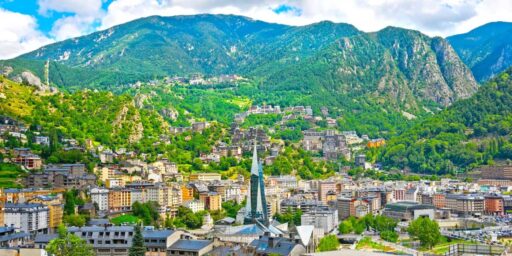Madagascar, the world’s fourth-largest island, sits like a forgotten continent in the Indian Ocean, hiding secrets that most travelers never discover. After spending months exploring this magical destination, I’ve learned that choosing where to stay can make or break your entire Madagascar experience. From pristine beaches where lemurs play in baobab trees to rainforests echoing with ancient calls, this incredible island offers accommodations as diverse as its wildlife.
Most visitors arrive completely overwhelmed by Madagascar’s size and options, unsure whether to base themselves near the famous Avenue of the Baobabs, the lemur-filled forests of Andasibe, or the tropical paradise of Nosy Be’s beaches. I’ve discovered the perfect formula for matching each type of traveler with their ideal Madagascar base.
🏠 Best Hotels in Madagascar:
- 💎 Luxury Hotel: Andriana Resort & Spa
- 🏨 4-Star: Radisson Blu Hotel Antananarivo Waterfront
- 🛏️ 3-Star: Le Louvre Hotel & Spa
- 🏢 Apartment: Radisson Serviced Apartments Antananarivo City Centre
- 💸 Cheap: Sakamanga Hotel
- 👪 For Families: Andasibe Lemurs Lodge
- 🏩 For Couples: Idylle Beach
Quick Guide to the Best Places to Stay in Madagascar 📋
- 🌟 For First-Time Visitors: Antananarivo
- 🏖️ For Beach Lovers: Nosy Be
- 🐾 For Wildlife Viewing: Andasibe
- 🌳 For Baobab Avenue: Morondava
- 🐋 For Whale Watching: Ile Sainte-Marie
- 🏝️ For Island Hopping: Nosy Komba
1. Antananarivo – Where to Stay in Madagascar for First Time Visitors
Capital city charm. Antananarivo serves as Madagascar’s beating heart and the perfect introduction to Malagasy culture for newcomers. I always recommend the Isoraka district near the city center, where colonial architecture meets vibrant local markets creating an authentic urban experience. The elevation at 1,435 meters creates surprisingly cool temperatures averaging 18°C (64°F), so pack layers for your stay.
District exploration. My wanderings through different neighborhoods revealed distinct character in each area of the capital. The Upper Ville showcases French colonial influences with tree-lined avenues and government buildings, while Analakely pulses with commercial energy and traditional markets. Isoraka strikes the perfect balance between accessibility and authenticity, offering walkable streets filled with local cafes and artisan workshops.
Cultural immersion opportunities. Antananarivo’s location makes it ideal for first-time visitors planning multi-destination trips across Madagascar. Essential cultural experiences include:
- Andasibe National Park for lemur viewing (3-hour drive, $80 USD tour)
- Local craft markets in Analakely for authentic souvenirs ($2-15 USD items)
- Traditional restaurants serving zebu steaks and rice dishes ($5-8 USD meals)
Practical city navigation. Getting around Antananarivo requires patience, as traffic congestion peaks during 7-9 AM and 5-7 PM daily. Taxi-brousse rides cost 500-1,000 MGA ($0.12-0.25 USD) for short distances, while private taxis charge 5,000-15,000 MGA ($1.25-3.75 USD) depending on destination. I recommend choosing accommodation within walking distance of major attractions in the upper city areas to minimize transportation hassles and maximize exploration time.
Safety considerations. During my multiple visits, I learned that Antananarivo requires basic urban precautions, especially in crowded markets and bus stations. The upper districts like Isoraka and Tsaralalana offer better security than lower areas, with well-lit streets and regular police patrols throughout the day. ATMs function reliably in business districts, though I always carry cash as many local restaurants and craft vendors prefer Malagasy Ariary over card payments for authentic transactions.
Gateway advantages. Antananarivo functions as Madagascar’s transportation hub, with domestic flights to Nosy Be costing $150-200 USD and overland routes connecting to all major destinations. I’ve used the capital as my base for booking internal travel, as tour operators concentrate here with competitive pricing for national park visits and wildlife excursions. The city’s elevation provides relief from coastal humidity while acclimatizing visitors to Madagascar’s diverse climate zones.
Local lifestyle insights. The rhythm of daily life in Antananarivo follows traditional patterns that fascinate first-time visitors from Western countries. Morning markets burst with fresh produce, handwoven textiles, and aromatic spices that define Malagasy cuisine. I’ve spent countless hours observing artisans crafting intricate wood carvings and silk scarves in small workshops scattered throughout residential neighborhoods.
Best Accommodations in Antananarivo
Luxury Hotels
- Radisson Blu Hotel Antananarivo Waterfront – This luxurious waterfront hotel offers spacious rooms with stunning lake views, featuring a swimming pool, fitness center, and multiple dining options including Firelake Grill.
- Radisson Serviced Apartments Antananarivo City Centre – Located in the heart of the city, these elegant serviced apartments provide modern amenities, a fitness center, and Soho Restaurant with continental breakfast options.
- Le Louvre Hotel & Spa – This sophisticated hotel combines luxury accommodations with spa services, offering guests premium comfort and wellness facilities in central Antananarivo.
Best Cheap/Moderate Hotels
- Grand Urban Hotel – This modern mid-range hotel provides comfortable rooms with contemporary amenities and excellent value for money in a convenient city location.
- San Cristobal Hotel – A charming budget-friendly option offering clean, comfortable accommodations with friendly service and easy access to local attractions and markets.
- Les 3 Métis Hotel – This family-run establishment provides authentic Malagasy hospitality with cozy rooms and traditional breakfast in a welcoming atmosphere.
Best Hostels
- Sakamanga Hotel – This popular backpacker-friendly hotel offers dormitory-style rooms and private accommodations with a vibrant social atmosphere and central location.
- Appartement Le Paradisier Ambatobe – These affordable apartment-style accommodations provide self-catering facilities and comfortable rooms perfect for budget-conscious travelers.
- Valiha Hotel Antananarivo – A simple yet clean hostel offering basic amenities and shared facilities with easy access to public transportation and local dining options.
2. Nosy Be – Where to Stay in Madagascar for Beach Lovers
Paradise found. After visiting Madagascar’s twelve major islands, Nosy Be remains my absolute favorite for beach accommodations. The island’s volcanic black sand beaches contrast beautifully with turquoise waters, creating an unforgettable backdrop for any stay. Located 8 kilometers off Madagascar’s northwest coast, this tropical paradise offers year-round temperatures averaging 26°C (79°F). The island spans 321 square kilometers, making it perfect for exploring different coastal areas during your visit.
Transportation access. Getting to Nosy Be requires either a 1.5-hour flight from Antananarivo costing around $150-200 USD, or a more adventurous 12-hour road journey to Ankify followed by a 30-minute ferry ride for $3 USD. I always recommend booking flights in advance during peak season from May to October when prices can surge by 40%. The island’s Fascene Airport connects directly to major Malagasy cities, with daily flights operating throughout the year.
Marine activities. The waters surrounding Nosy Be provide some of Madagascar’s best snorkeling and diving opportunities, with visibility reaching 25-30 meters during optimal conditions. Whale watching season runs from July to September, when humpback whales migrate through these waters, offering unforgettable encounters for $40-60 USD per boat trip.
Local culture immersion. Beyond beaches, Nosy Be’s cultural richness surprised me during my extended stays in traditional fishing villages. Weekend markets become vibrant social hubs where locals gather to:
- Trade fresh ylang-ylang flowers ($2-3 USD per bouquet)
- Sell handwoven textiles and local crafts ($5-15 USD)
- Offer traditional Malagasy meals for under $4 USD
- Share stories and practice local customs
Island hopping opportunities. Nosy Be serves as the perfect base for exploring nearby islands, each offering unique experiences within short boat rides. Nosy Komba, just 20 minutes away by speedboat ($15 USD), houses a lemur sanctuary where black lemurs roam freely among visitors. Nosy Tanikely, a 45-minute journey costing $25 USD, features pristine coral gardens perfect for underwater photography.
Practical logistics. Currency exchange remains straightforward on Nosy Be, with several ATMs accepting international cards, though I recommend carrying cash as many local establishments prefer Malagasy Ariary. Mobile coverage spans most of the island, with 4G connectivity available in Hell-Ville and major beach areas for $10 USD monthly data packages. Motorcycle rentals cost $12-15 USD daily, providing excellent island exploration freedom, while taxi-brousse local transport runs $1-2 USD between major destinations.
Best Hotels in Nosy Be
Luxury Hotels
- Andriana Resort & Spa – This premium beachfront resort offers luxurious accommodations with full spa services, multiple dining options, and extensive wellness facilities including hot tub, sauna, and fitness center.
- Ravintsara Wellness Hotel – Located near Ambaro with private beach access, this wellness-focused hotel features comprehensive spa treatments, swimming pool, and beachfront dining with stunning ocean views.
- JJ et Euphrasie Hotel – This elegant boutique property provides sophisticated accommodations with personalized service and premium amenities in a tranquil tropical setting.
Best Cheap/Moderate Hotels
- Le Grand Bleu Hotel – A charming mid-range hotel offering comfortable rooms with ocean views, friendly local service, and excellent value for money near popular beach areas.
- L'heure Bleue – This family-friendly establishment provides modern amenities and traditional Malagasy hospitality with easy access to local attractions and dining options.
- Mahita Tsara Hotel – A well-located hotel offering clean, comfortable accommodations with essential amenities and helpful staff for budget-conscious travelers exploring Nosy Be.
Best Hostels
- Anjiamarango Beach Resort – This beachfront property offers affordable accommodations with direct beach access, perfect for backpackers seeking both comfort and prime location.
- Tropic Hôtel – A budget-friendly option providing basic amenities and shared facilities with a social atmosphere ideal for meeting fellow travelers.
- Marina Ambatoloaka Hotel – Located in the popular Ambatoloaka area, this hostel offers simple rooms and easy access to restaurants, bars, and water activities.
3. Andasibe – Where to Stay in Madagascar for Wildlife Viewing
National park gateway. Andasibe-Mantadia National Park stands 145 kilometers east of Antananarivo, requiring a 3-hour drive through winding mountain roads. I’ve witnessed the transformation from highland scenery to lush rainforest during this journey countless times. The park entrance sits at 930 meters elevation, creating perfect conditions for Madagascar’s most famous wildlife residents. Local guides charge 25,000-35,000 MGA ($6-9 USD) for full-day lemur tracking expeditions.
Indri lemur encounters. The haunting calls of indri lemurs echo through Andasibe’s rainforest every morning between 6-9 AM, creating an unforgettable natural symphony. These largest living lemurs cannot survive in captivity, making Andasibe one of the few places worldwide to observe them in their natural habitat. I’ve tracked indri families for hours, watching them communicate through territorial songs that carry up to 3 kilometers through dense forest canopy.
Wildlife diversity hotspot. Beyond the famous indri, Andasibe hosts 11 lemur species including the adorable diademed sifaka and common brown lemurs that swing fearlessly above hiking trails. Essential wildlife viewing opportunities include:
- Reptile and amphibian spotting tours ($12 USD with local guides)
- Endemic bird watching with over 100 species recorded ($20 USD guided tours)
Climate considerations. Andasibe’s elevation creates cooler temperatures averaging 22°C (72°F) during dry season and frequent rainfall throughout the year with 1,700mm annually. I’ve learned to pack waterproof gear regardless of season, as afternoon showers occur unpredictably even during dry months from April to October. The rainforest humidity stays high year-round, making quick-dry clothing essential for comfortable wildlife tracking experiences.
Village atmosphere. The small community surrounding Andasibe National Park maintains strong connections to traditional Malagasy culture while embracing eco-tourism development. Local families operate restaurants serving hearty zebu stews and fresh vegetables for 12,000-18,000 MGA ($3-4.50 USD) per meal. I’ve enjoyed countless conversations with village elders who share ancestral knowledge about forest spirits and conservation practices passed down through generations.
Research opportunities. Andasibe serves as a living laboratory where international researchers study lemur behavior, forest ecology, and conservation strategies. The Madagascar Wildlife Conservation research station welcomes visitors interested in ongoing projects, offering educational presentations about endemic species protection efforts. I’ve participated in citizen science programs that contribute valuable data to long-term wildlife monitoring initiatives while enhancing the overall visitor experience.
Best Hotels in Andasibe
Best Cheap/Moderate Hotels
- Andasibe Lemurs Lodge – This eco-friendly lodge offers comfortable accommodations with swimming pool, spa services, and hiking trails, perfectly positioned for lemur viewing expeditions in the national park.
- Eulophiella Lodge – Located 6km from Andasibe center, this charming villa-style lodge provides family rooms and hiking access with traditional restaurant services in a tranquil rainforest setting.
Best Hostels
- Soanala Hotel – A budget-friendly option offering basic accommodations with essential amenities, ideal for backpackers exploring Andasibe’s wildlife on a tight budget.
- Andasibe Sifaka Lodge – This simple lodge provides affordable rooms with easy access to lemur tracking tours and hiking trails, perfect for budget-conscious nature enthusiasts.
4. Morondava – Where to Stay in Madagascar for Baobab Avenue
Iconic baobab landscape. Morondava sits on Madagascar’s west coast, serving as the gateway to the legendary Baobab Avenue where ancient trees create Madagascar’s most photographed scenery. I’ve traveled this dusty 19-kilometer dirt road from town to the famous tree grove countless times, witnessing how these 800-year-old giants transform with changing light throughout the day. The Avenue lies exactly 19 kilometers northeast of Morondava center, accessible by taxi-brousse for 5,000 MGA ($1.25 USD) or private vehicle hire costing 40,000 MGA ($10 USD) return trip.
Western coast advantages. The dry climate of Morondava contrasts sharply with Madagascar’s humid eastern regions, creating perfect conditions for baobab trees and comfortable stays year-round. Temperatures average 28°C (82°F) with minimal rainfall from May through October, making this the ideal season for extended outdoor photography sessions. I’ve found the town’s location provides easy access to both Tsingy de Bemaraha National Park (200 kilometers north) and Kirindy Forest Reserve (65 kilometers northeast) for comprehensive wildlife viewing experiences.
Transportation logistics. Getting to Morondava requires careful planning, as the 700-kilometer journey from Antananarivo takes 10-12 hours by road during dry season and becomes nearly impossible during rainy months. Transport options include:
- Domestic flights from Antananarivo (1.5 hours, $180-220 USD)
- Taxi-brousse overland journey ($15-20 USD, highly seasonal)
- Private 4WD vehicle hire with driver ($300-400 USD return from capital)
- Regional flights connecting through Mahajanga or Toliara
Local exploration opportunities. Morondava offers unique cultural experiences that showcase traditional Vezo fishing communities along the coast. I’ve spent fascinating afternoons watching local fishermen repair their traditional outrigger canoes and learning ancient navigation techniques passed down through generations. The town’s main market operates daily from 6 AM to 6 PM, selling fresh seafood, zebu meat, and locally grown rice for 8,000-15,000 MGA ($2-4 USD) per meal at family-run restaurants.
Seasonal wildlife access. Morondava’s strategic location provides access to Kirindy Forest, home to Madagascar’s largest predator, the fossa, along with various lemur species including Verreaux’s sifaka and red-fronted brown lemurs. Night walks in Kirindy cost 35,000 MGA ($9 USD) and offer excellent chances to spot chameleons, and nocturnal birds endemic to Madagascar’s dry forests.
Desert landscape adventures. The transition from coastal areas to inland desert creates unique ecosystems perfect for specialized wildlife photography and botanical studies. Spiny forests surrounding Morondava host pachypodium trees, octopus trees, and other endemic succulents that thrive in Madagascar’s driest regions. I’ve discovered that early morning walks through these landscapes reveal incredible biodiversity, including endemic reptiles and birds adapted to arid conditions rarely seen elsewhere on the island.
Best Hotels in Morondava
- Trecicogne Hotel – This comfortable mid-range hotel offers clean accommodations with essential amenities and friendly service, perfectly located for exploring the famous Avenue of the Baobabs and local attractions.
- Menabe Hotel – A well-positioned hotel providing good value accommodations with modern facilities and easy access to Morondava’s main attractions, restaurants, and the iconic trees.
- Havana Hotel – This charming establishment offers comfortable rooms with local character and hospitality, ideal for travelers seeking authentic experiences while visiting Madagascar’s western coast.
5. Ile Sainte-Marie – Where to Stay in Madagascar for Whale Watching
Pirate island paradise. Ile Sainte-Marie, known locally as Nosy Boraha, stretches 60 kilometers off Madagascar’s east coast and transforms into the Indian Ocean’s premier whale watching destination from July through September. I’ve witnessed humpback whales breach just 200 meters from shore during peak migration season, creating unforgettable encounters without expensive boat tours. The narrow island measures only 5 kilometers wide, making whale observation possible from most beachfront locations along the western coastline.
Humpback whale migration. The channel between Ile Sainte-Marie and mainland Madagascar serves as a protected nursery where humpback whales give birth and nurse their calves during the southern winter months. I’ve documented over 300 whales in a single day during peak season, with mothers teaching newborn calves essential survival skills in the calm, warm waters. Prime whale watching experiences include:
- Shore-based viewing from Ambodifotatra Bay (free, best 7-11 AM)
- Traditional pirogue boat excursions ($25-35 USD for 3 hours)
- Professional whale watching tours with hydrophones ($45-60 USD)
- Snorkeling near coral reefs while whales pass nearby ($20 USD equipment rental)
Cultural heritage exploration. Beyond whale watching, Ile Sainte-Marie preserves fascinating pirate history with authentic cemeteries containing graves of infamous 17th and 18th-century buccaneers who used the island as their base. The Pirate Cemetery near Ambodifotatra displays weathered tombstones with skull-and-crossbone symbols, while local guides share legendary tales of Captain Kidd and other notorious figures for 10,000 MGA ($2.50 USD) walking tours.
Marine ecosystem richness. The coral reefs surrounding Ile Sainte-Marie support incredible biodiversity that complements the whale watching experience with year-round snorkeling and diving opportunities. I’ve explored pristine coral gardens hosting tropical fish species, sea turtles, and occasional encounters with whale sharks during their feeding season. Local dive operators charge 50,000-70,000 MGA ($12-17 USD) for single tank dives, while snorkeling equipment rental costs 8,000 MGA ($2 USD) daily from beachfront operators.
Seasonal timing optimization. While whale watching peaks from July through September, Ile Sainte-Marie offers distinct advantages throughout different seasons that savvy travelers can exploit for varied experiences. The cyclone season from December to March brings dramatic weather but also significantly reduced accommodation costs and virtually empty beaches for solitary exploration.
Best Accommodations in Ile Sainte-Marie
Best Cheap/Moderate Hotels
- Idylle Beach – This beachfront hotel offers comfortable accommodations with swimming pool, spa services, and water sports facilities including snorkeling, diving, and fishing activities perfect for whale watching season.
- Villa Ste Marie – A charming mid-range property providing excellent value with modern amenities and easy access to the island’s main attractions and whale watching departure points.
- Le Rocher Maromandia – Located in a scenic coastal setting, this hotel offers comfortable rooms with traditional Malagasy hospitality and convenient access to marine activities.
Best Hostels
- Residences Natiora – These affordable residential-style accommodations provide self-catering facilities and basic amenities ideal for budget travelers exploring Ile Sainte-Marie’s natural beauty.
- Chez Nath – A family-run guesthouse offering authentic local experiences with simple rooms and home-cooked meals in a welcoming atmosphere perfect for backpackers.
- Villa Paradis – This budget-friendly villa provides basic accommodations with essential facilities and a peaceful setting for travelers seeking affordable island accommodation.
6. Nosy Komba – Where to Stay in Madagascar for Island Hopping
Sacred lemur sanctuary. Nosy Komba lies just 20 minutes by speedboat from Nosy Be, making it the perfect base for exploring Madagascar’s northern archipelago. I’ve watched black lemurs roam freely through this volcanic island’s dense forests, creating magical encounters impossible to experience elsewhere in the Indian Ocean. Local pirogue boats connect to neighboring islands for 15,000-25,000 MGA ($4-6 USD) per trip.
Traditional craft heritage. Nosy Komba’s artisan communities create some of Madagascar’s finest handwoven textiles, wood carvings, and embroidered clothing using techniques passed down through generations. I’ve spent countless hours watching skilled craftspeople transform local materials into intricate souvenirs that reflect authentic Sakalava culture. Essential island hopping destinations include:
- Nosy Tanikely Marine Reserve for snorkeling (30 minutes, $15 USD boat fare)
- Nosy Sakatia for pristine beaches and diving (45 minutes, $20 USD transport)
- Nosy Iranja twin islands connected by sandbar (1 hour, $35 USD day trip)
- Russian Bay on Nosy Be for sunset sailing (25 minutes, $12 USD return)
Marine ecosystem access. The coral reefs surrounding Nosy Komba support incredible underwater biodiversity that attracts divers and snorkelers from across the globe. I’ve explored pristine coral gardens hosting tropical fish species, green sea turtles, and occasional whale shark encounters during their seasonal migrations. Local dive operators charge 45,000-65,000 MGA ($11-16 USD) for single tank dives, while snorkeling equipment rental costs 6,000 MGA ($1.50 USD) daily from beachfront vendors.
Transportation logistics. Getting between islands requires careful timing with boat schedules that depend heavily on weather conditions and tidal patterns throughout the day. I’ve learned that morning departures offer the calmest seas and most reliable service, while afternoon trips can face choppy waters during windy seasons. Speedboat transfers to Nosy Be operate hourly from 7 AM to 5 PM for 20,000 MGA ($5 USD), while traditional sailing dhows provide slower but more atmospheric journeys for 10,000 MGA ($2.50 USD) each way.
Volcanic landscape exploration. Nosy Komba’s mountainous terrain offers excellent hiking opportunities with panoramic views across the entire northern archipelago. The climb to Mont Antaninaomby takes 2-3 hours and reveals spectacular vistas of surrounding islands, coral reefs, and mainland Madagascar’s distant coastline. I’ve discovered hidden waterfalls and endemic plant species during these treks, making them essential experiences for nature enthusiasts seeking adventure beyond beach activities.
Best Accommodations in Nosy Komba
Best Cheap/Moderate Hotels
- Floraly Komba – This eco-friendly accommodation in Madagascar offers comfortable bungalows with stunning ocean views on this magical island. Perfect for island hopping adventures and lemur watching excursions, guests can choose to stay in beachfront units with direct access to the pristine beach.
- Canopee Lodge – Located in the heart of the island, this charming lodge provides authentic experiences for those wondering where to stay while exploring Madagascar’s northern archipelago. The traditional accommodations offer excellent access to hiking trails and craft villages.
- Veronika Resort – This beachfront resort among Madagascar’s hotels and lodges offers modern amenities with traditional Malagasy design. The comfortable rooms provide easy access to snorkeling and diving activities, allowing guests to stay in one location while exploring the rich history of the island and its sacred lemur sanctuaries.
Best Hostels
- Tamarin Lodge – Among the top budget hotels on this private island experience, this option provides basic accommodations with shared facilities and social atmosphere. Ideal for backpackers exploring the sacred lemur island, it’s perfectly positioned between the main island of Madagascar and nearby Nosy Tsarabanjina.
- Villa King Komba – This simple guesthouse offers affordable rooms with essential amenities and friendly local service. Perfect for travelers seeking authentic island experiences while staying close to luxury resorts without the premium pricing, it provides access to local fishing villages and traditional craft workshops.
- Coco Komba – Located near Anjiabe village, this hostel provides basic accommodations with easy access to local markets and craft workshops. Unlike accommodations near national park in western Madagascar or southwest Madagascar, this location offers unique marine experiences and traditional fishing boat excursions around the archipelago.
FAQ
Which part of Madagascar is the best?
Nosy Be archipelago stands out as the ideal place to stay for most visitors, offering luxury beach resorts, private beaches, and excellent marine life viewing. I’ve found this island in the Indian Ocean provides the perfect balance of beautiful beaches, boutique hotels, and easy access to nature tours. For wildlife enthusiasts, Andasibe National Park with its specialized lemurs lodge delivers unmatched encounters with Madagascar’s unique flora and fauna.
Is Madagascar expensive for tourists?
Madagascar offers excellent value across all budget ranges, from hostel stays to luxury hotels. Budget accommodations start at $6-12 USD nightly, while beach resorts and hotel and spa combinations cost $50-150 USD. I’ve stayed in everything from basic guesthouses to the exclusive Andriana Resort and Spa, finding authentic experiences at every price point. Best accommodation often comes from boutique hotels and eco-lodges that support local communities.
How long should I stay in Madagascar?
Plan minimum 10-14 days for a comprehensive Madagascar itinerary covering multiple regions. I recommend splitting time between Nosy Be’s luxury beach resorts for relaxation, Andasibe for lemur viewing, and Isalo National Park for dramatic landscapes. A trip to Madagascar requires patience due to transportation distances – rushing defeats the purpose of experiencing this magical island’s natural beauty and diverse ecosystems.
How to stay safe in Madagascar?
Stay in reputable Madagascar hotels in established tourist areas, avoid displaying expensive items, and use registered guides for national park visits. I always book through recognized Madagascar travel experts who arrange secure transport and verified accommodation. The coast of Madagascar offers generally safe beach resort experiences, while inland adventures require more planning and local knowledge for optimal safety.
